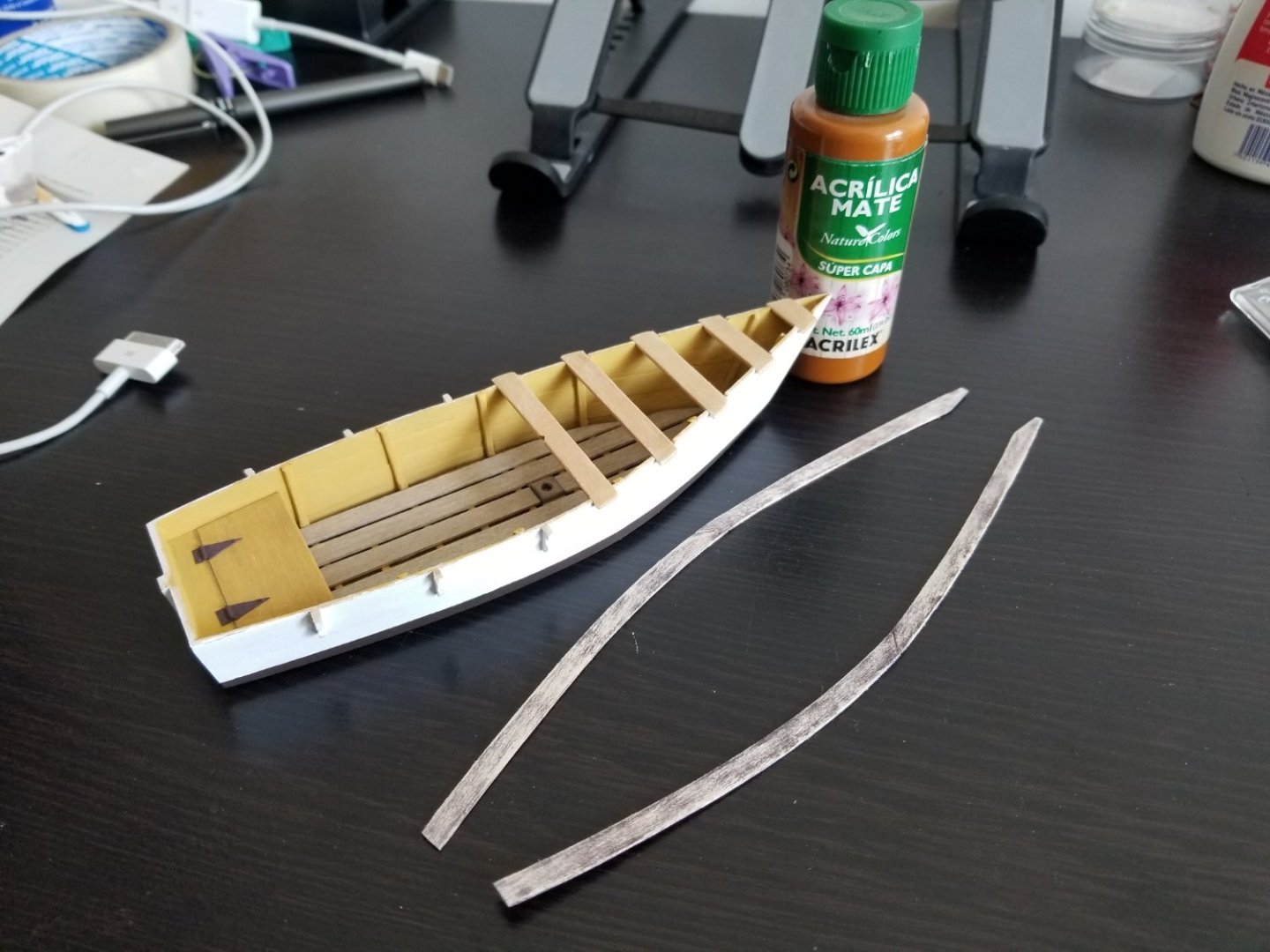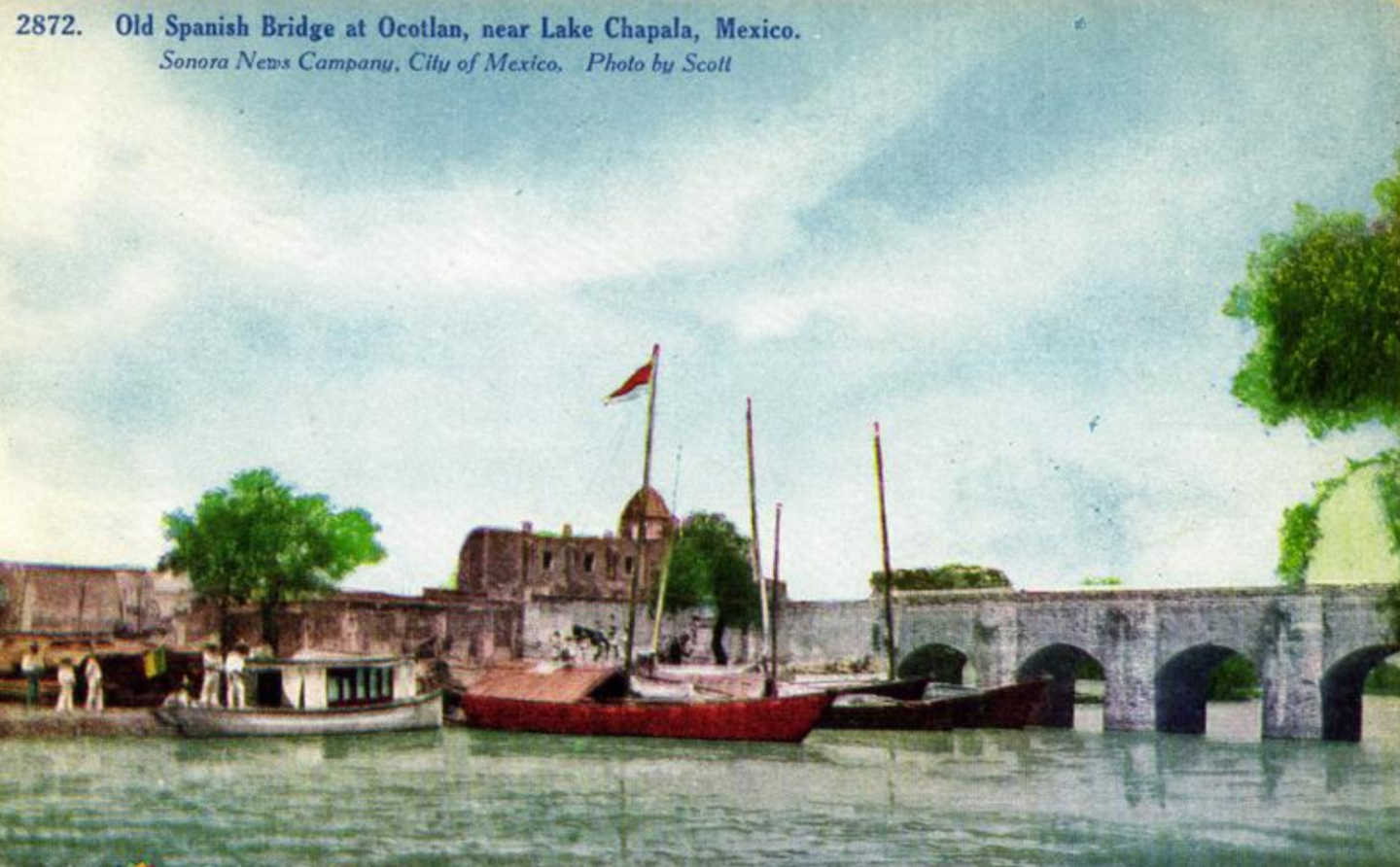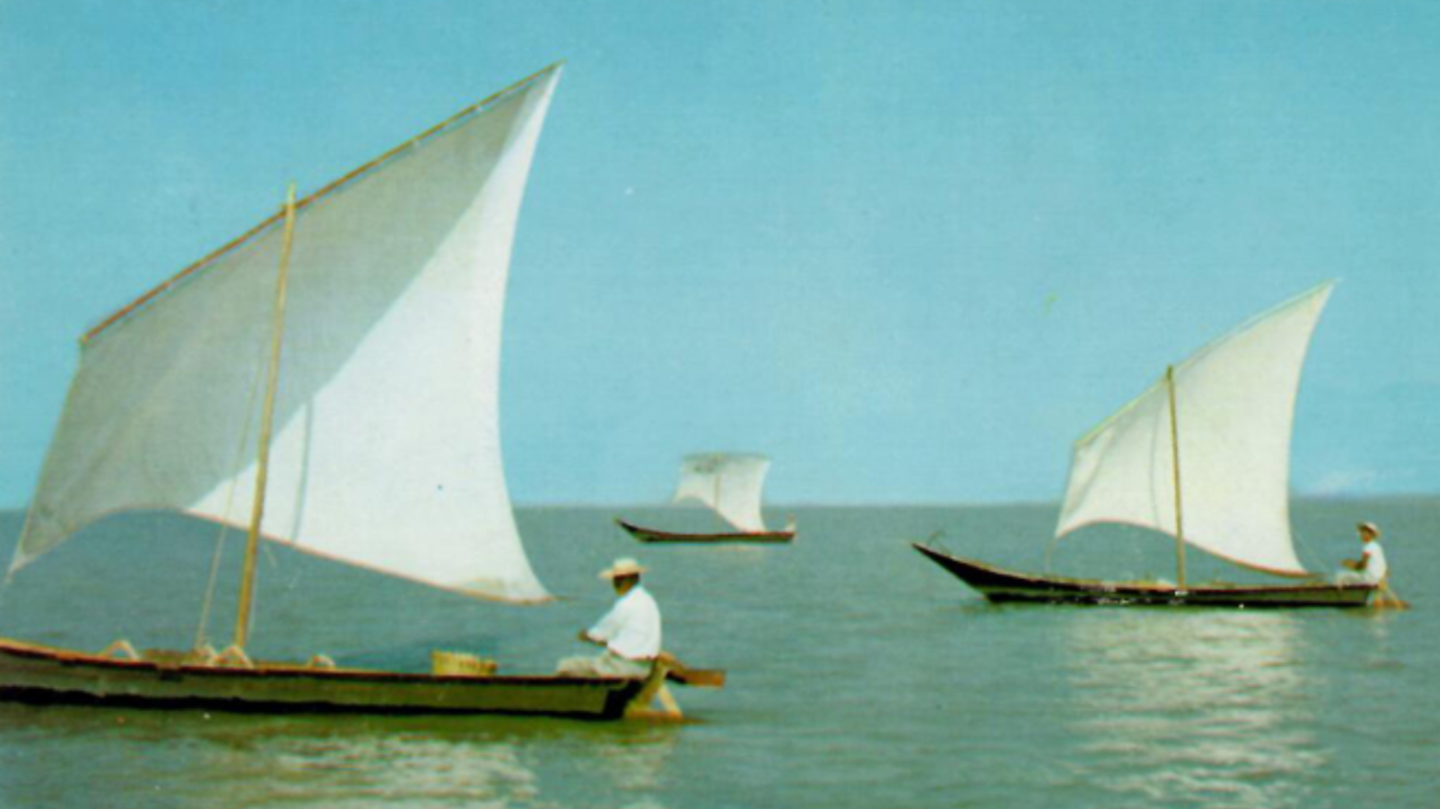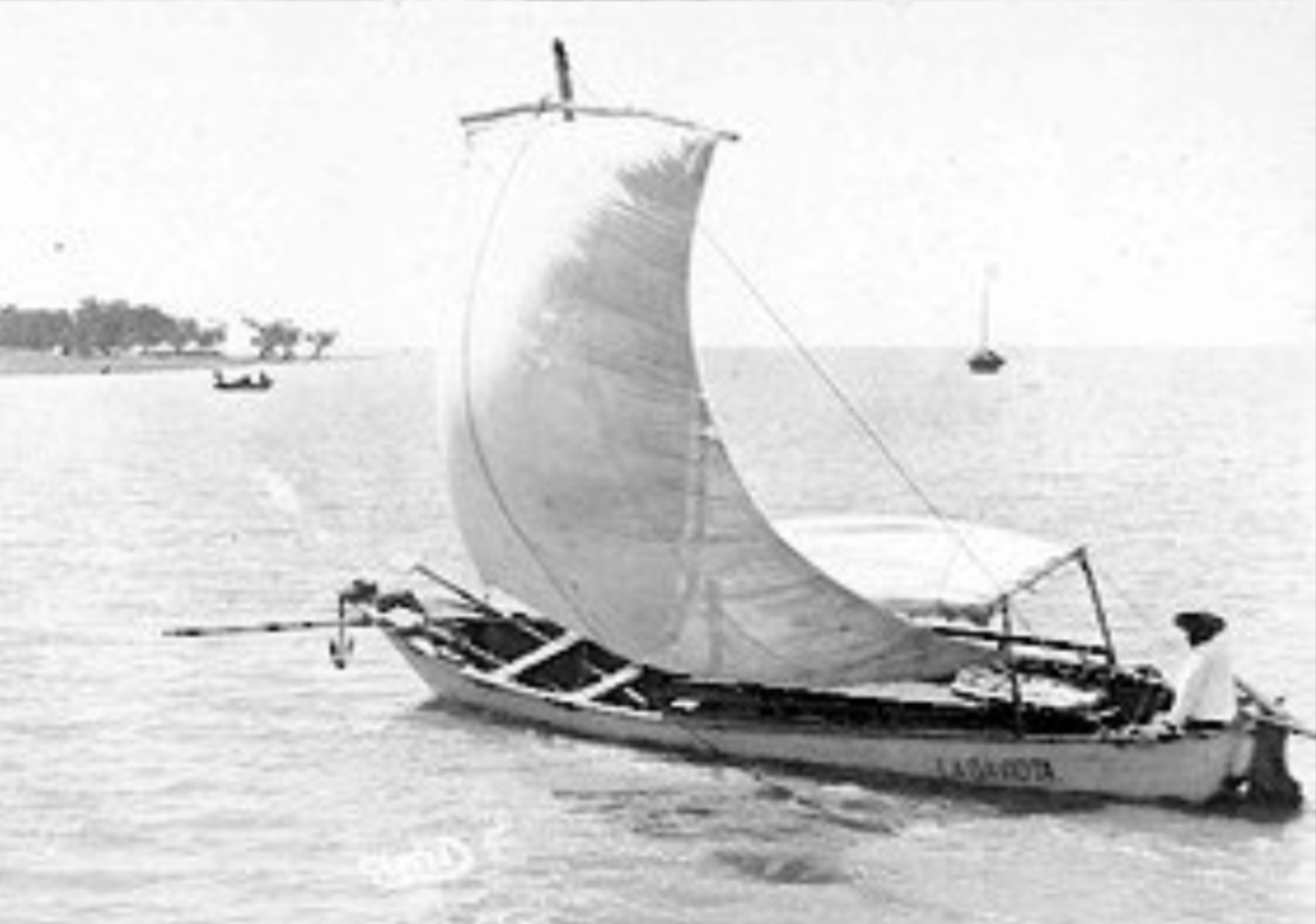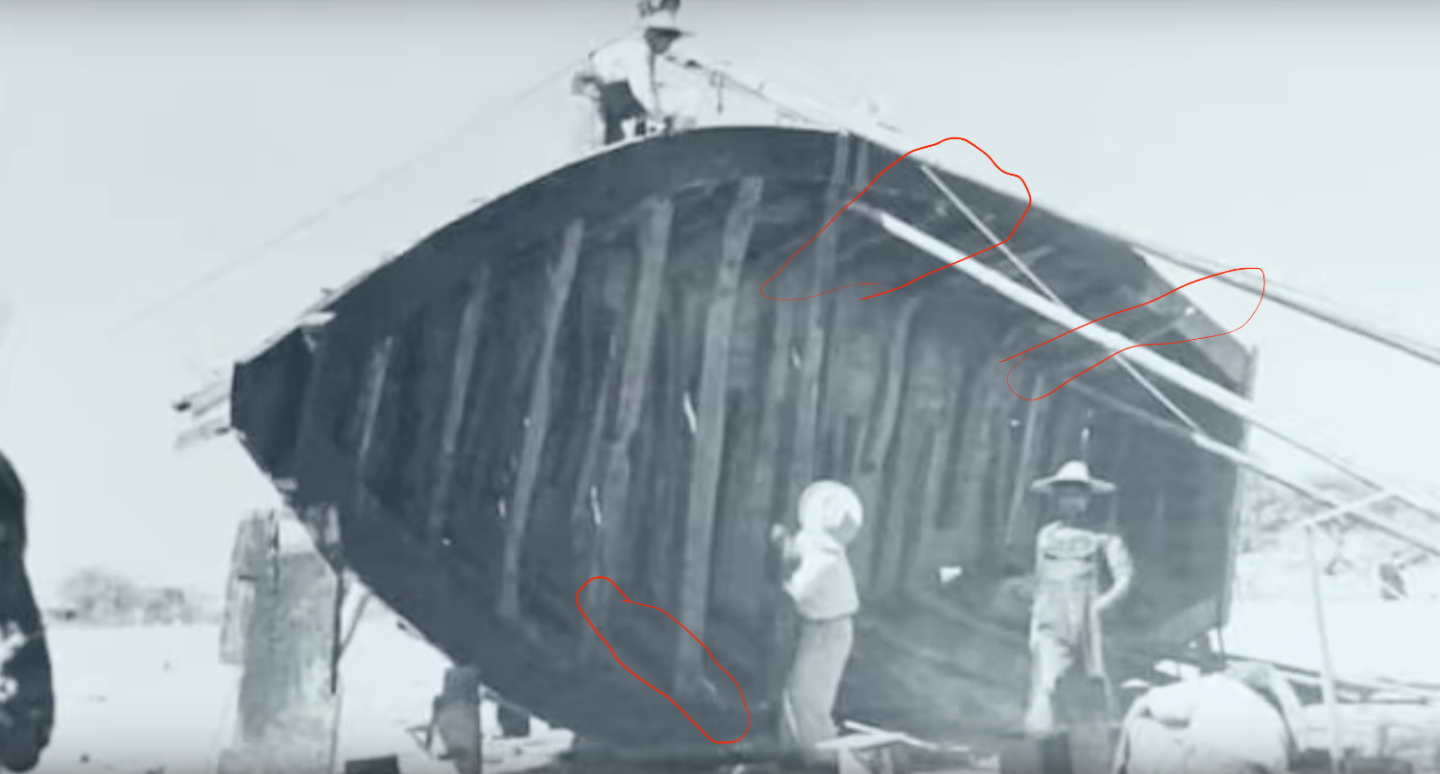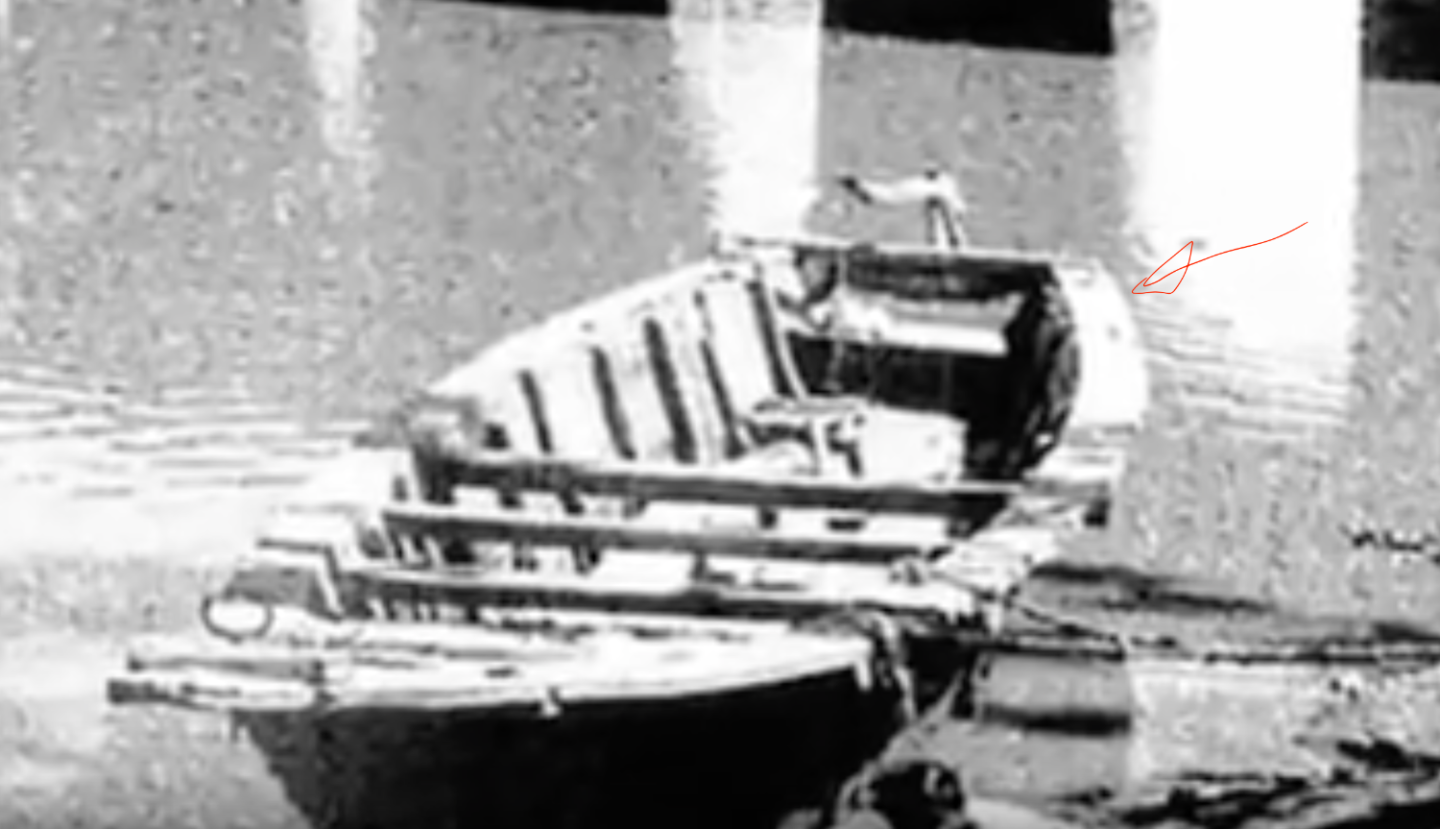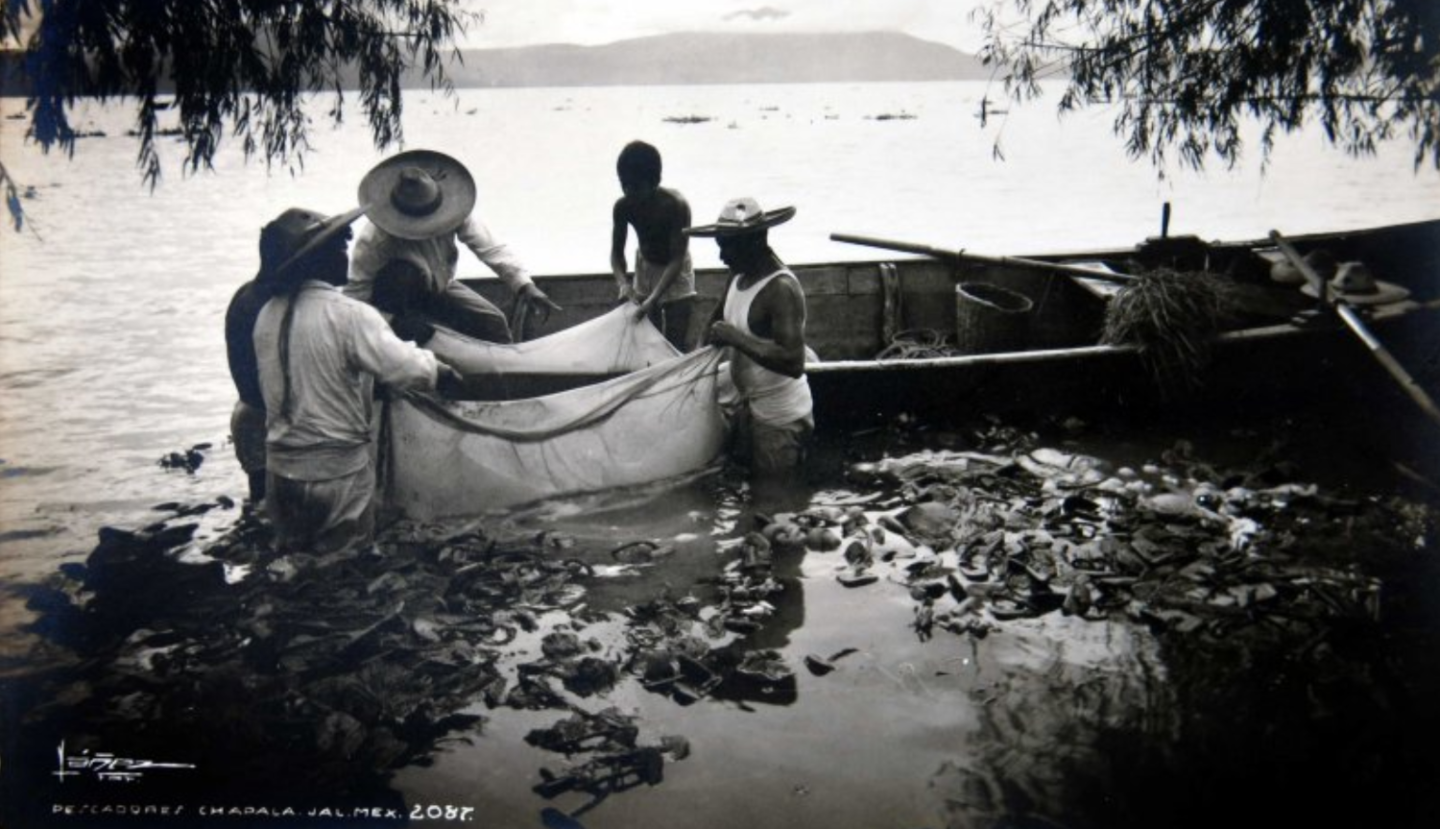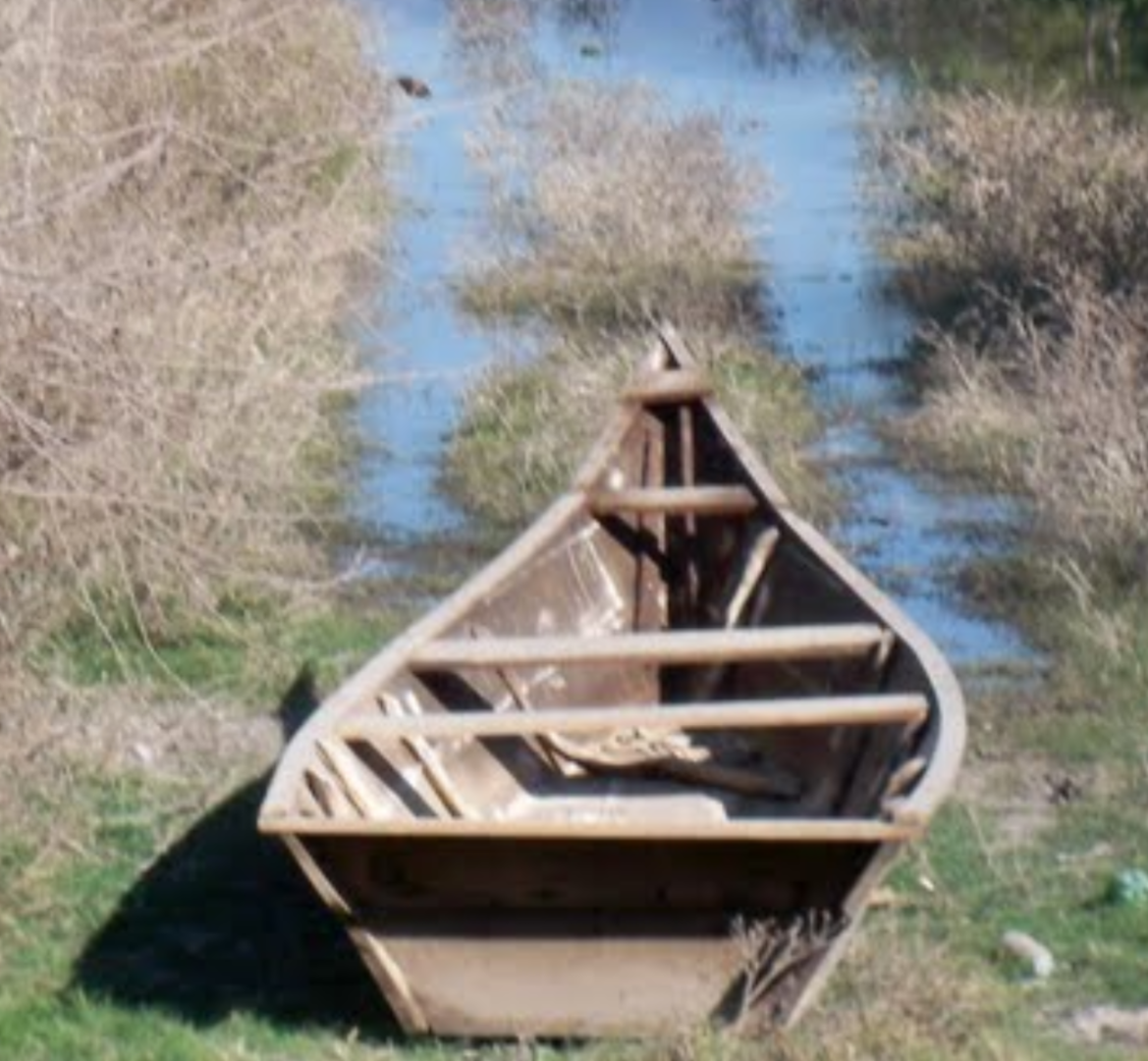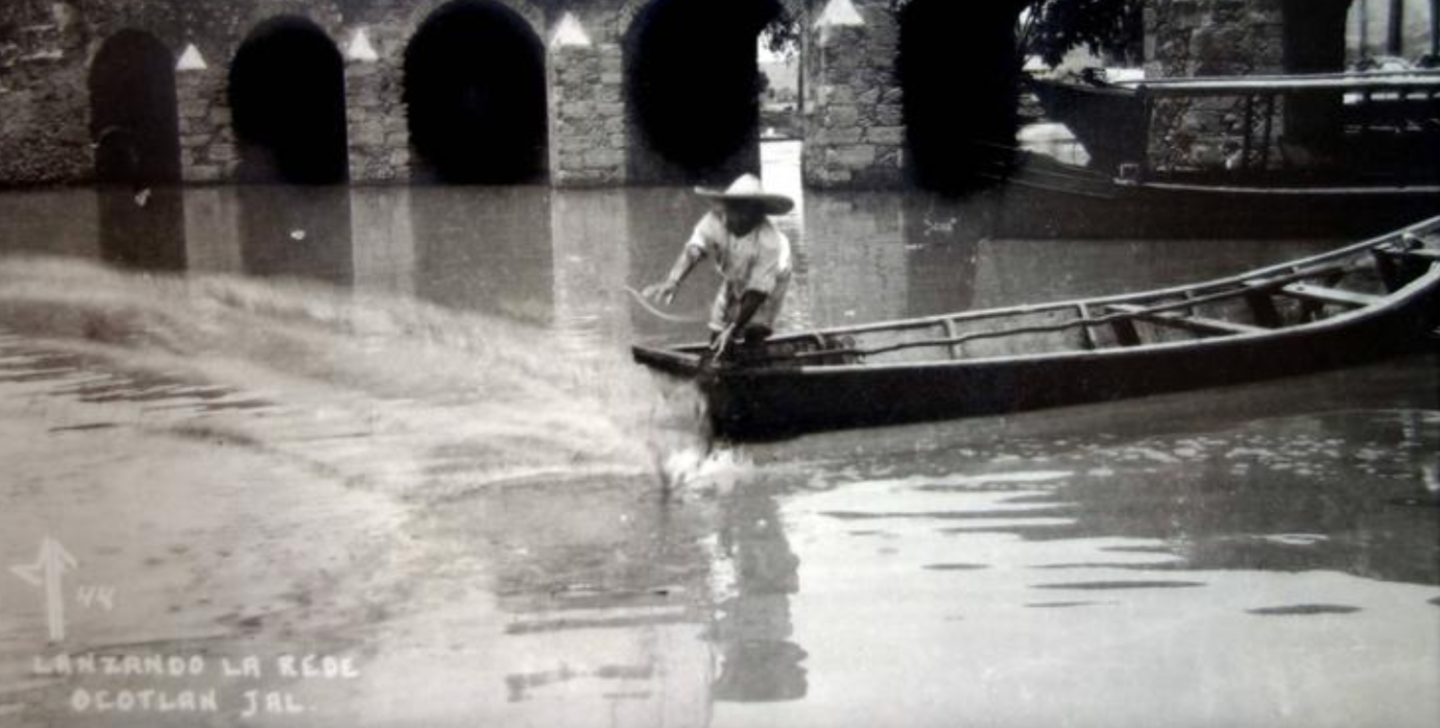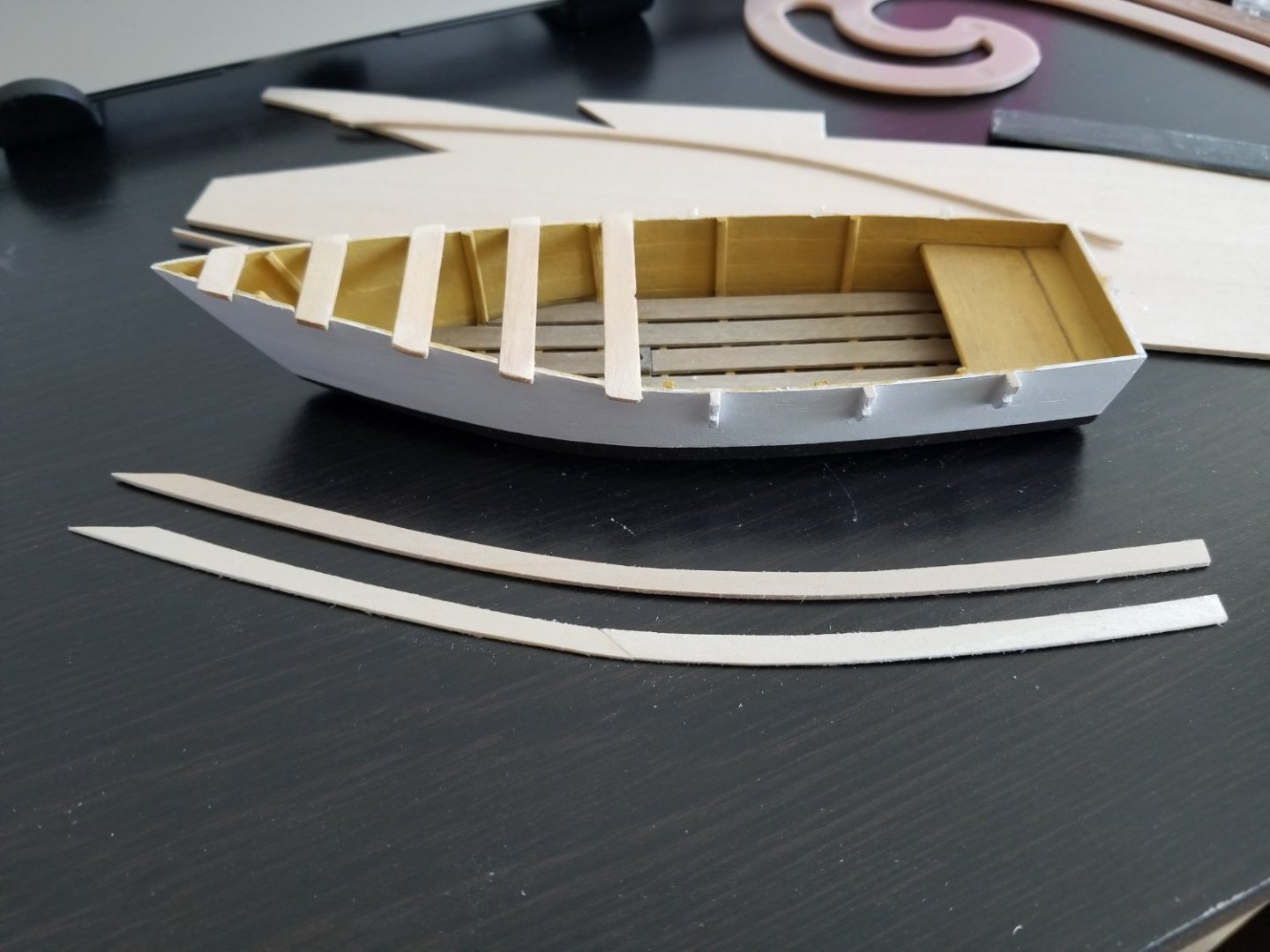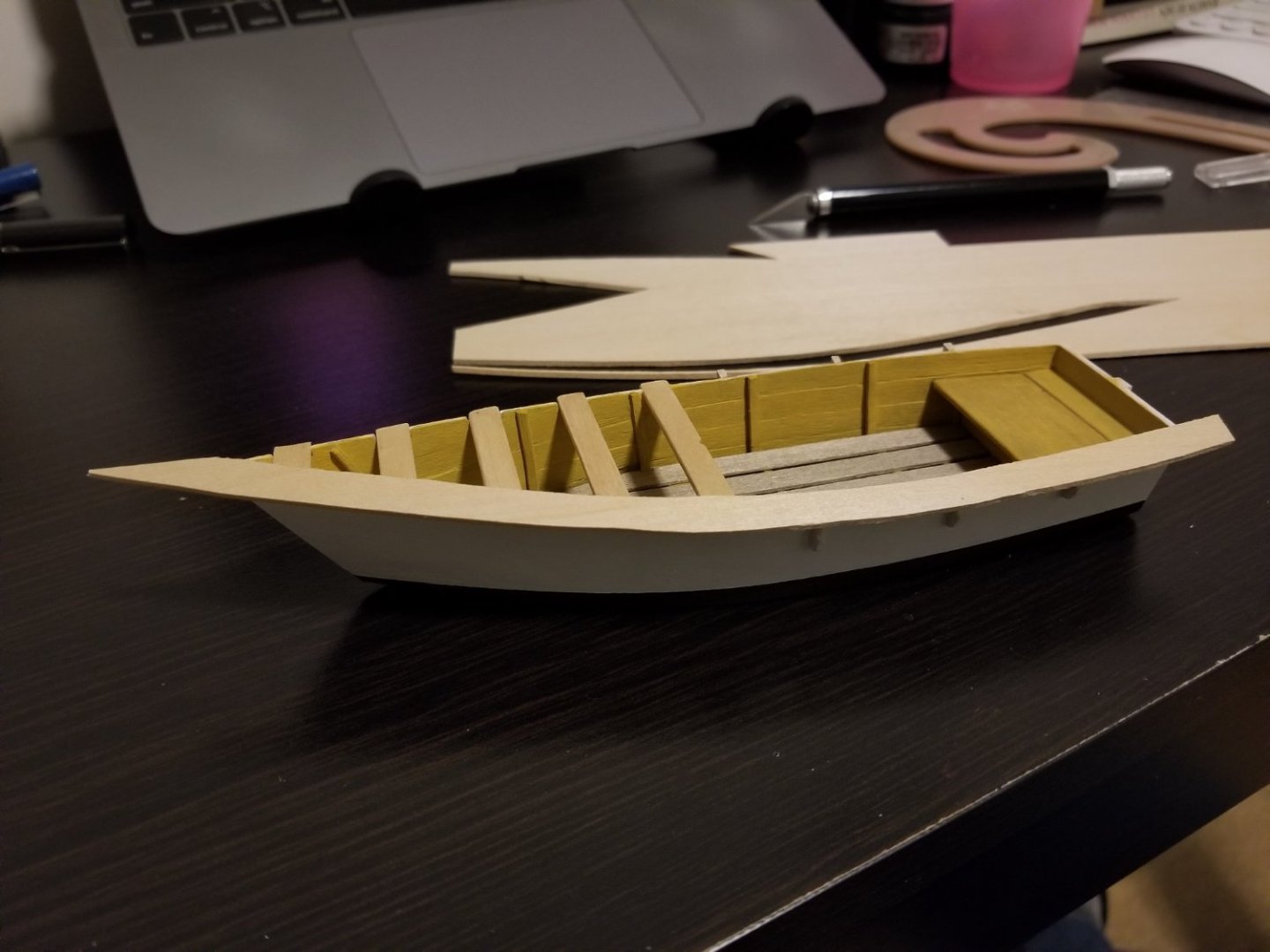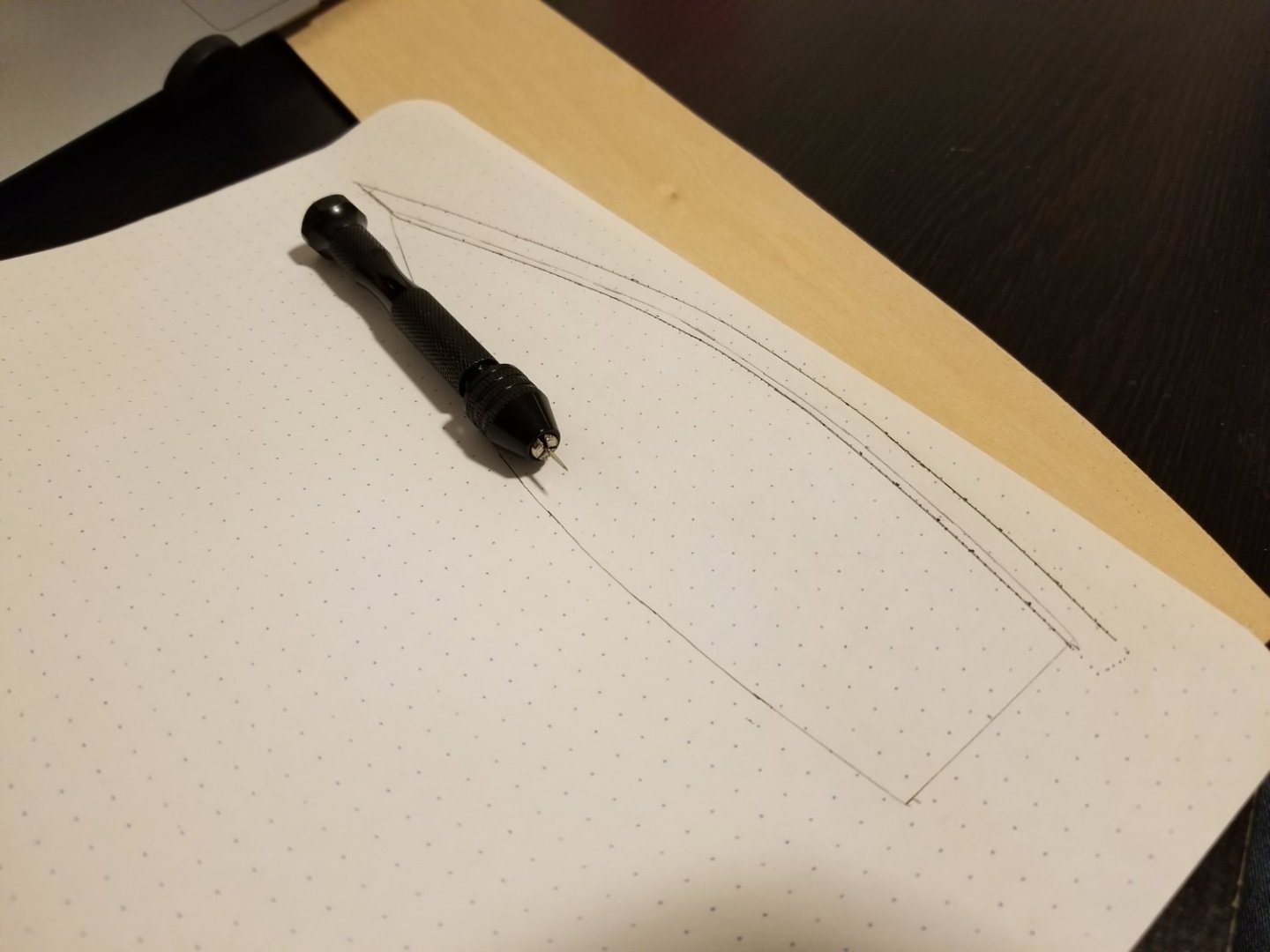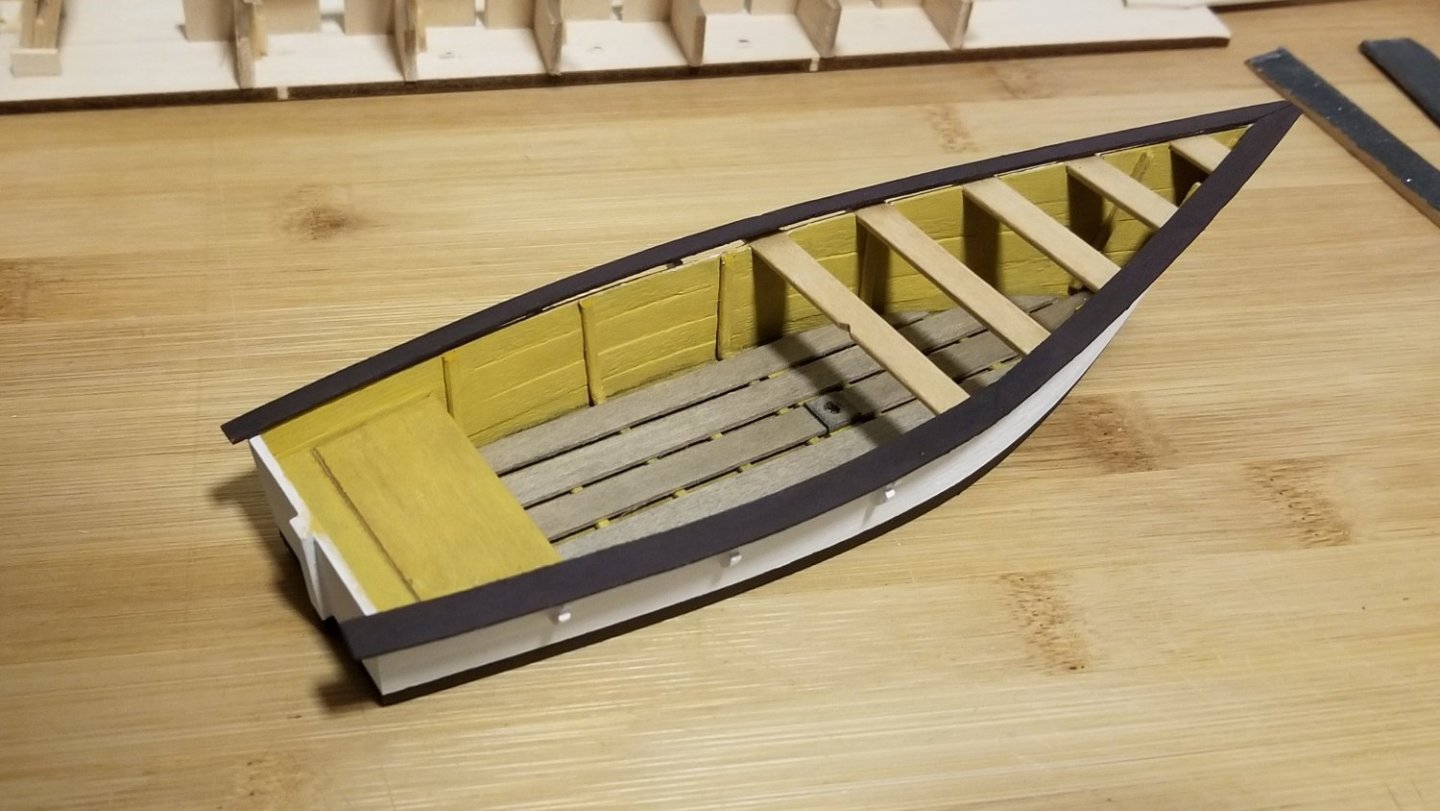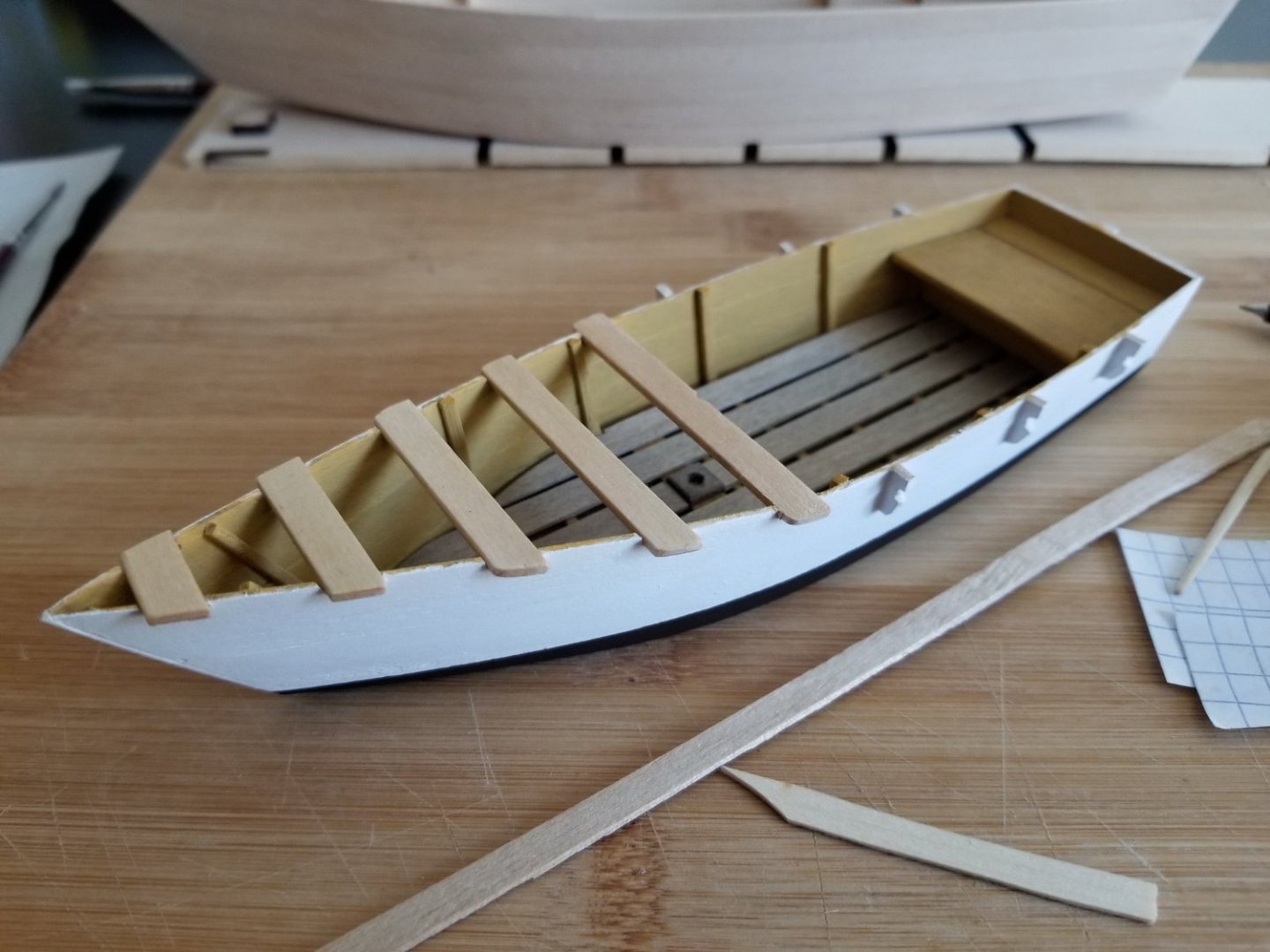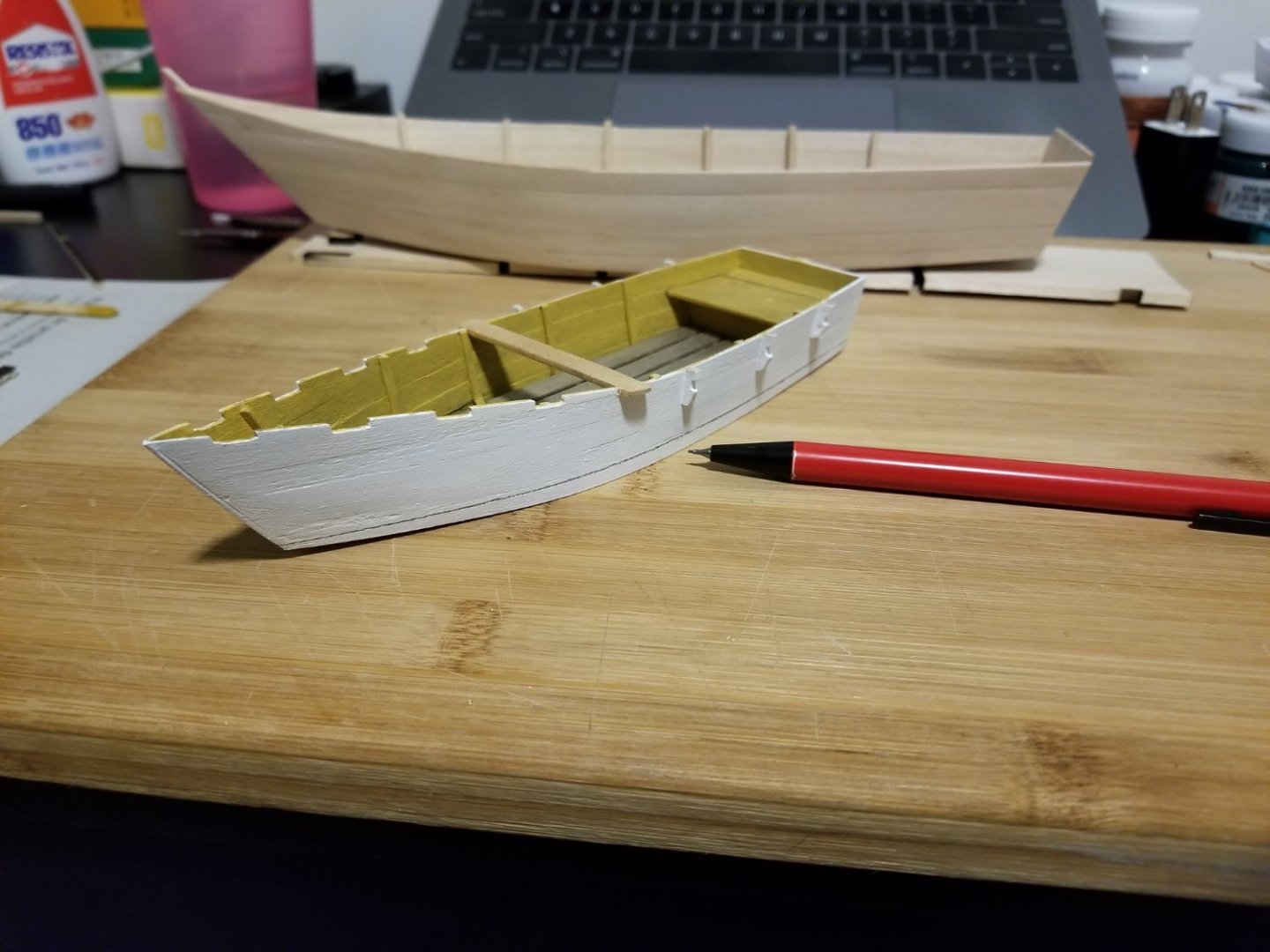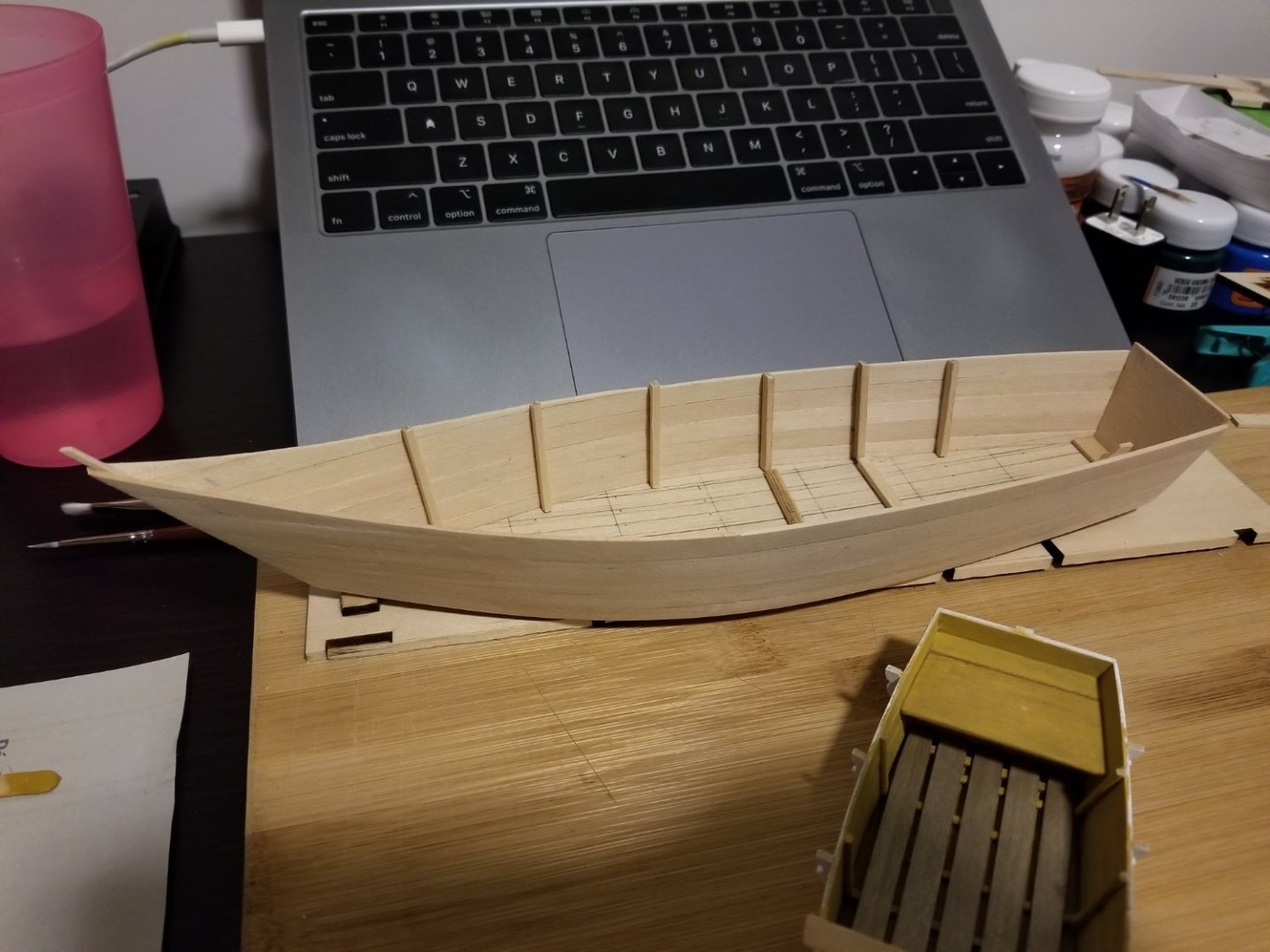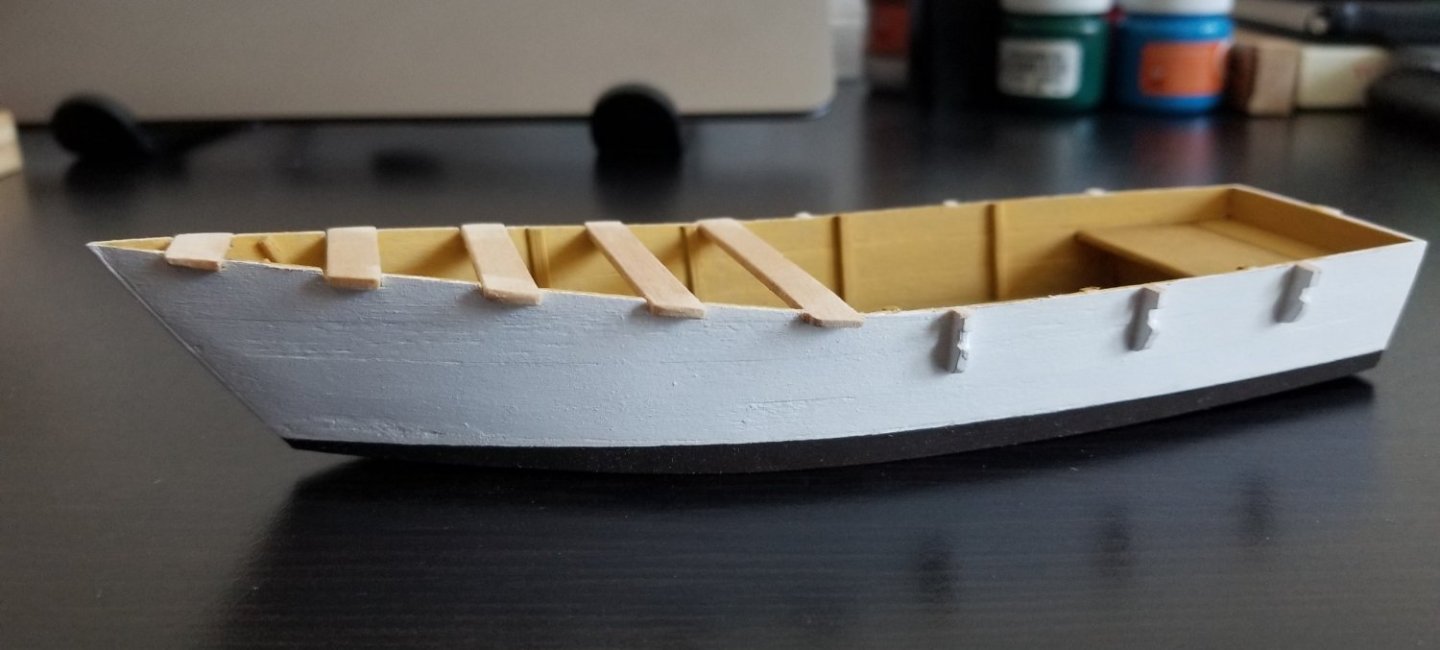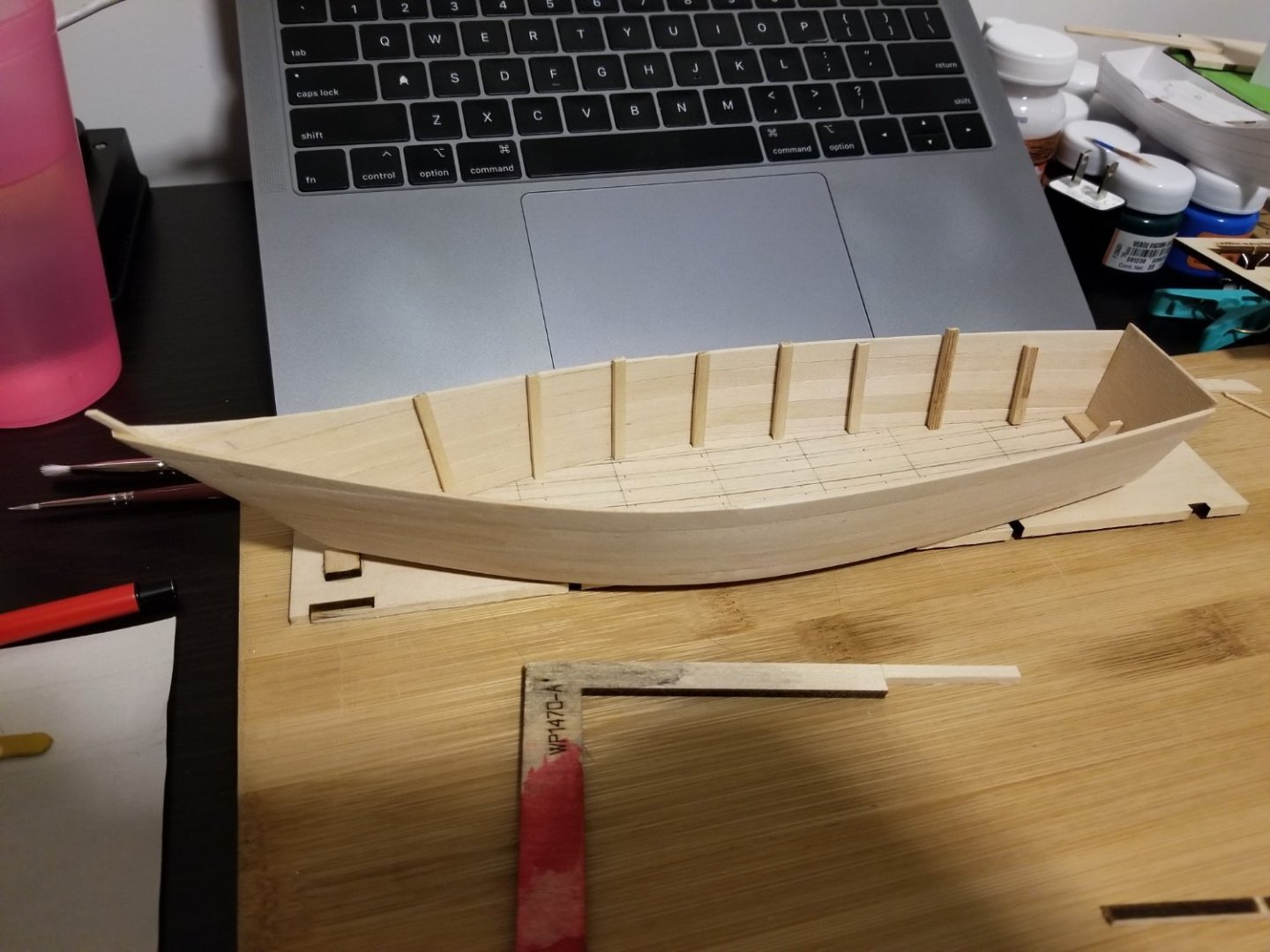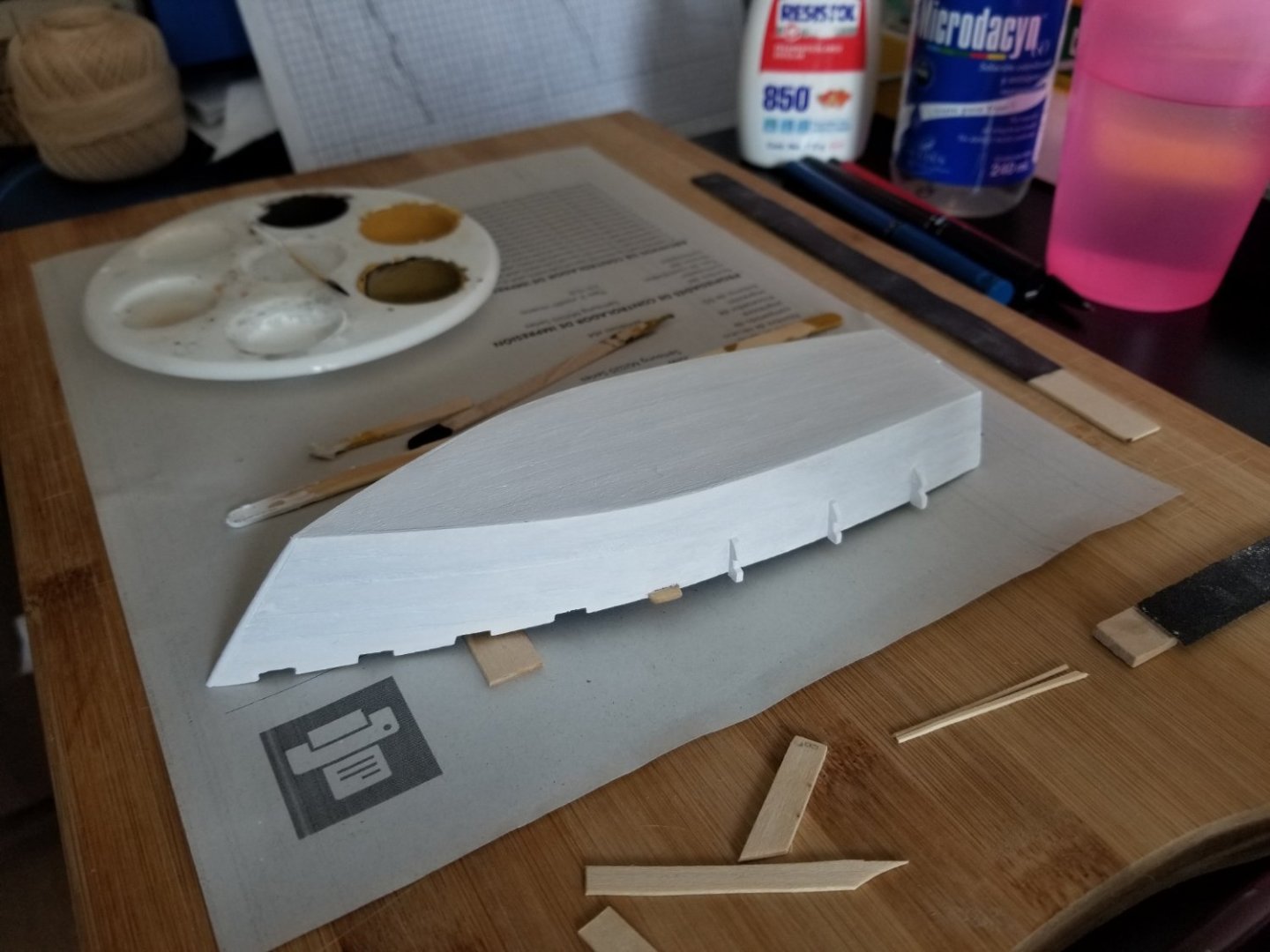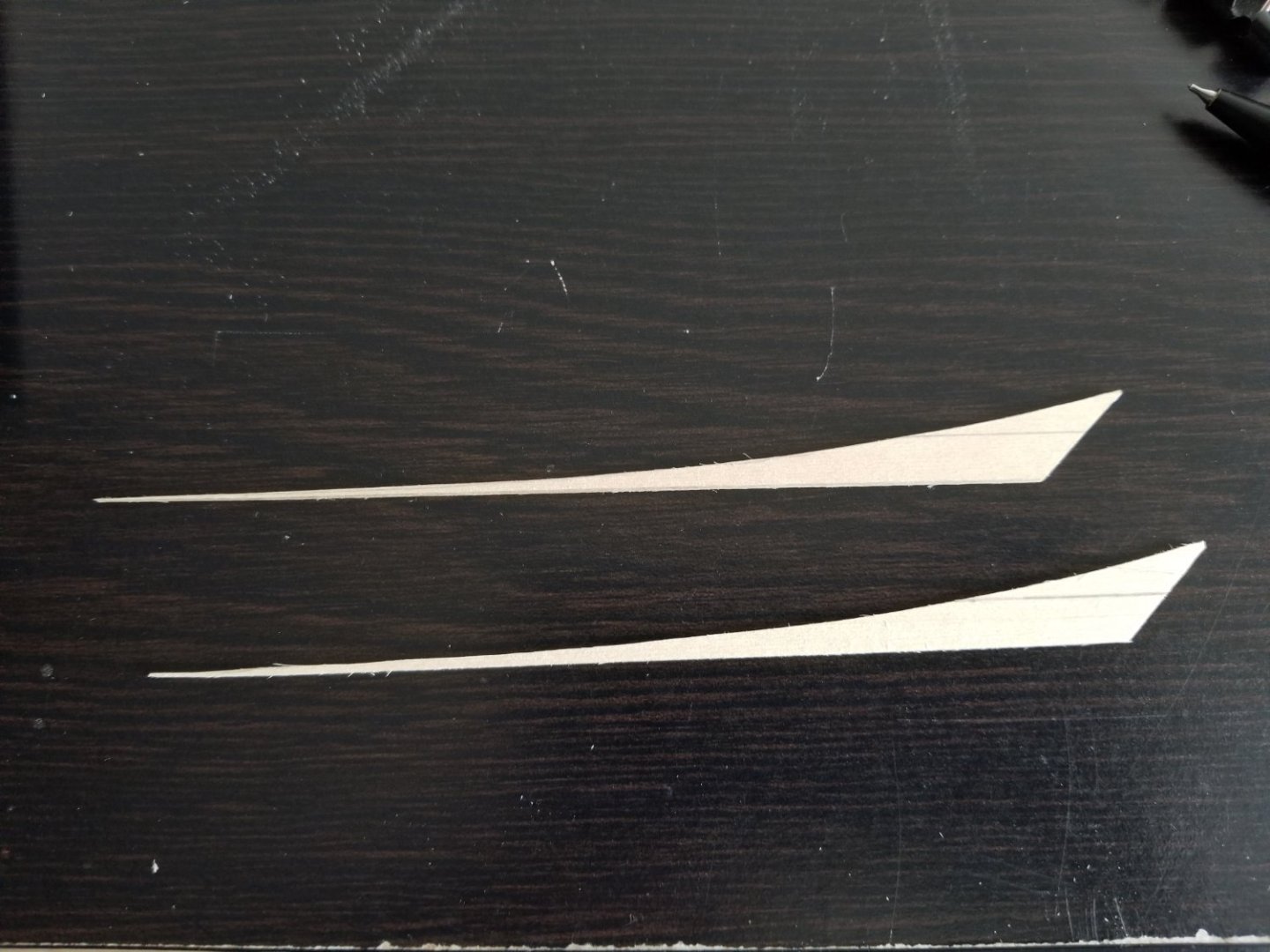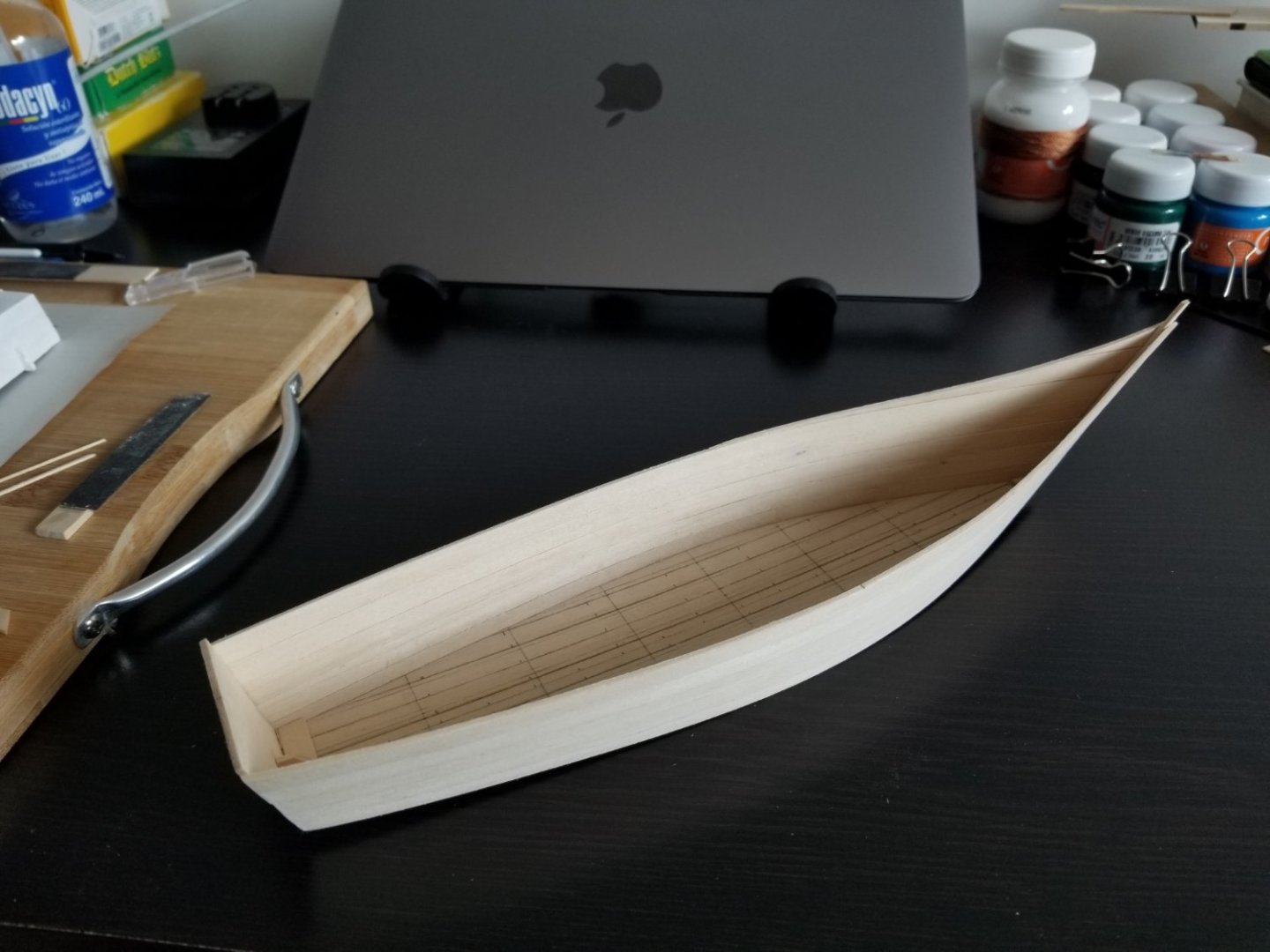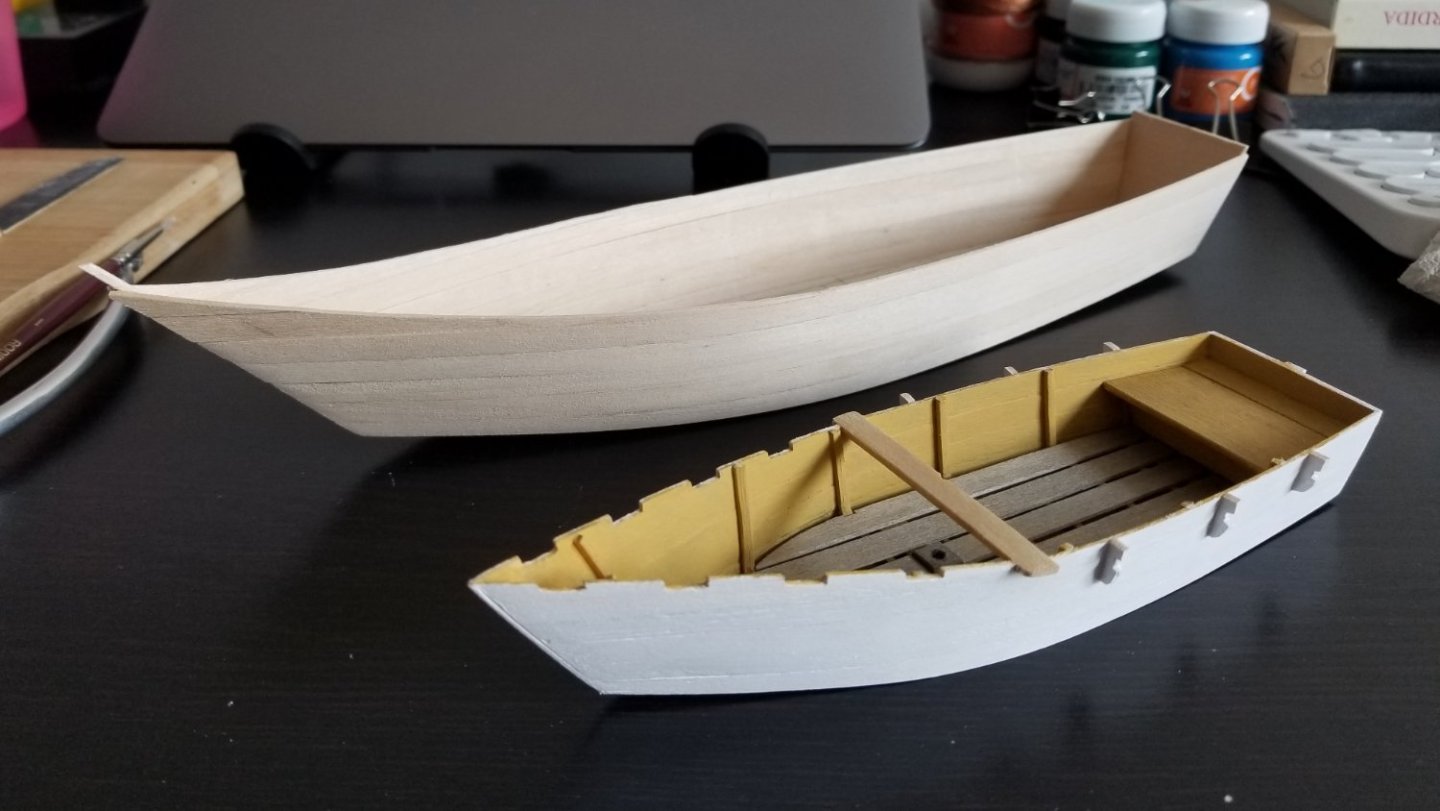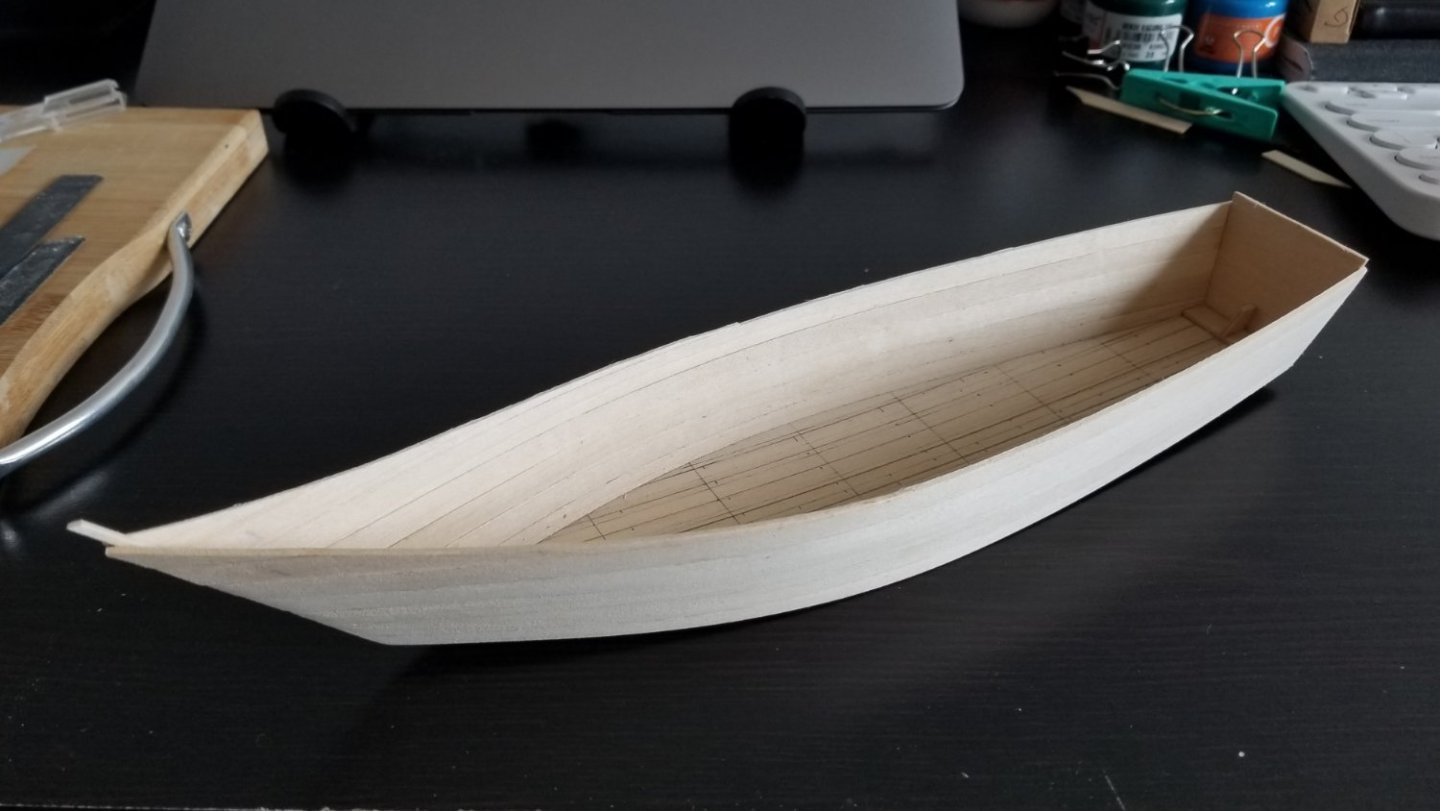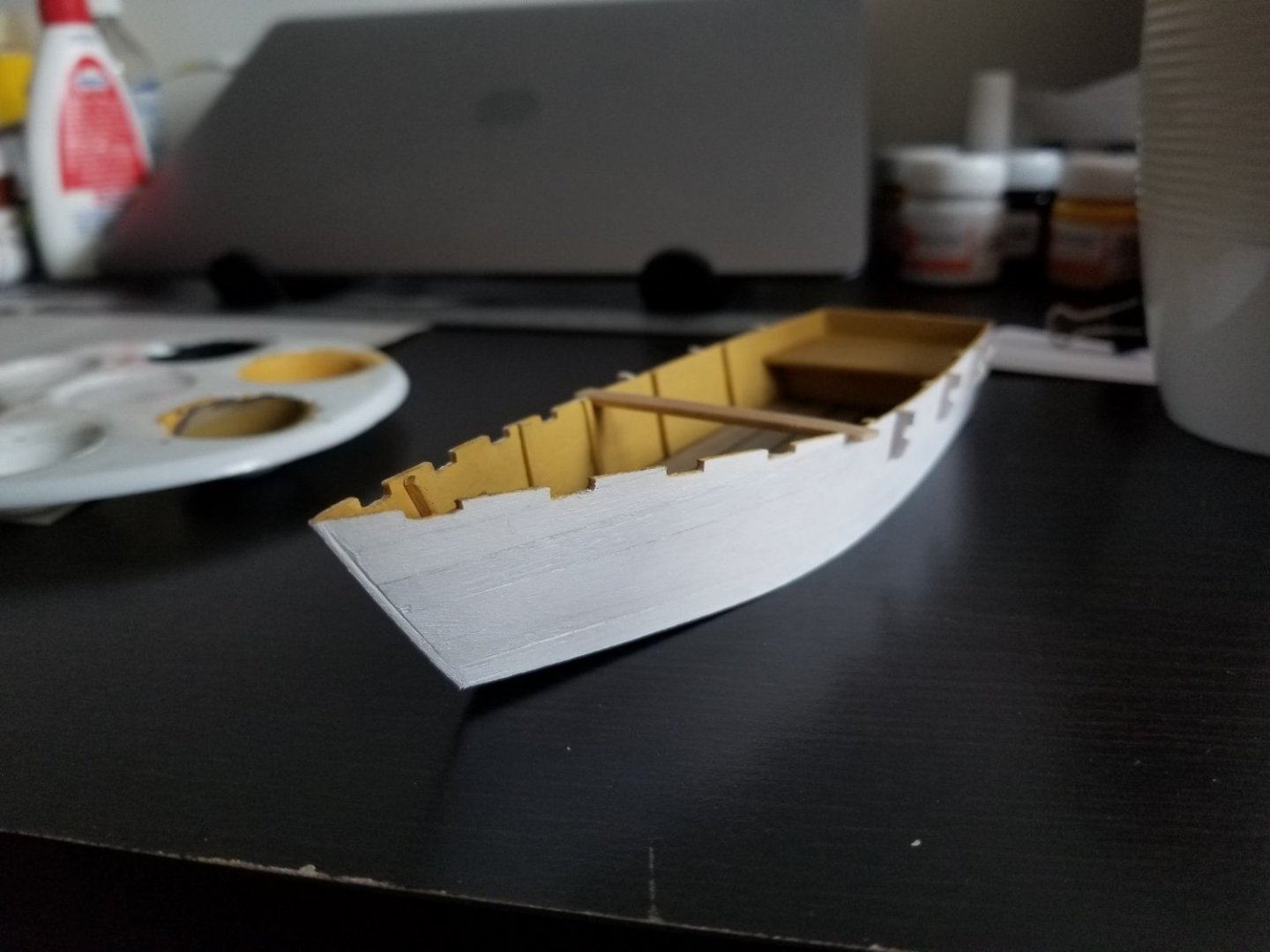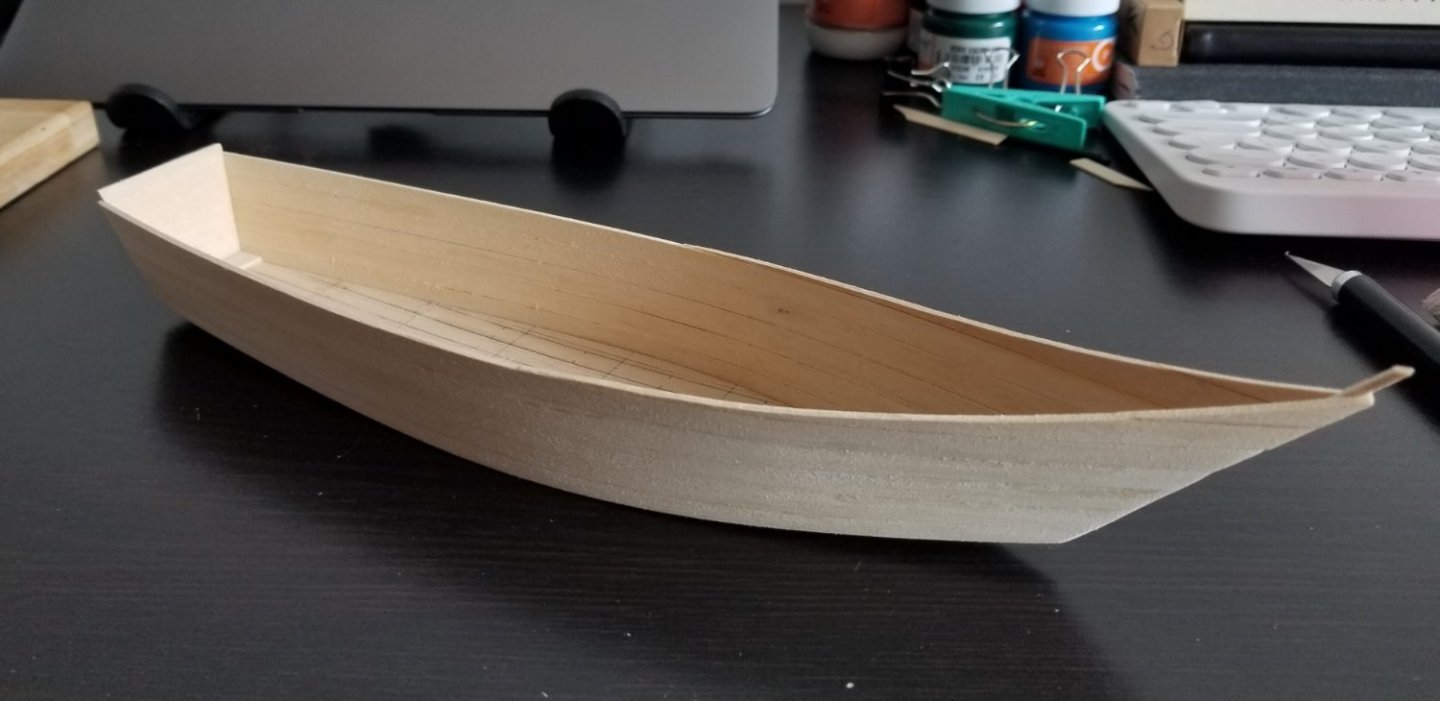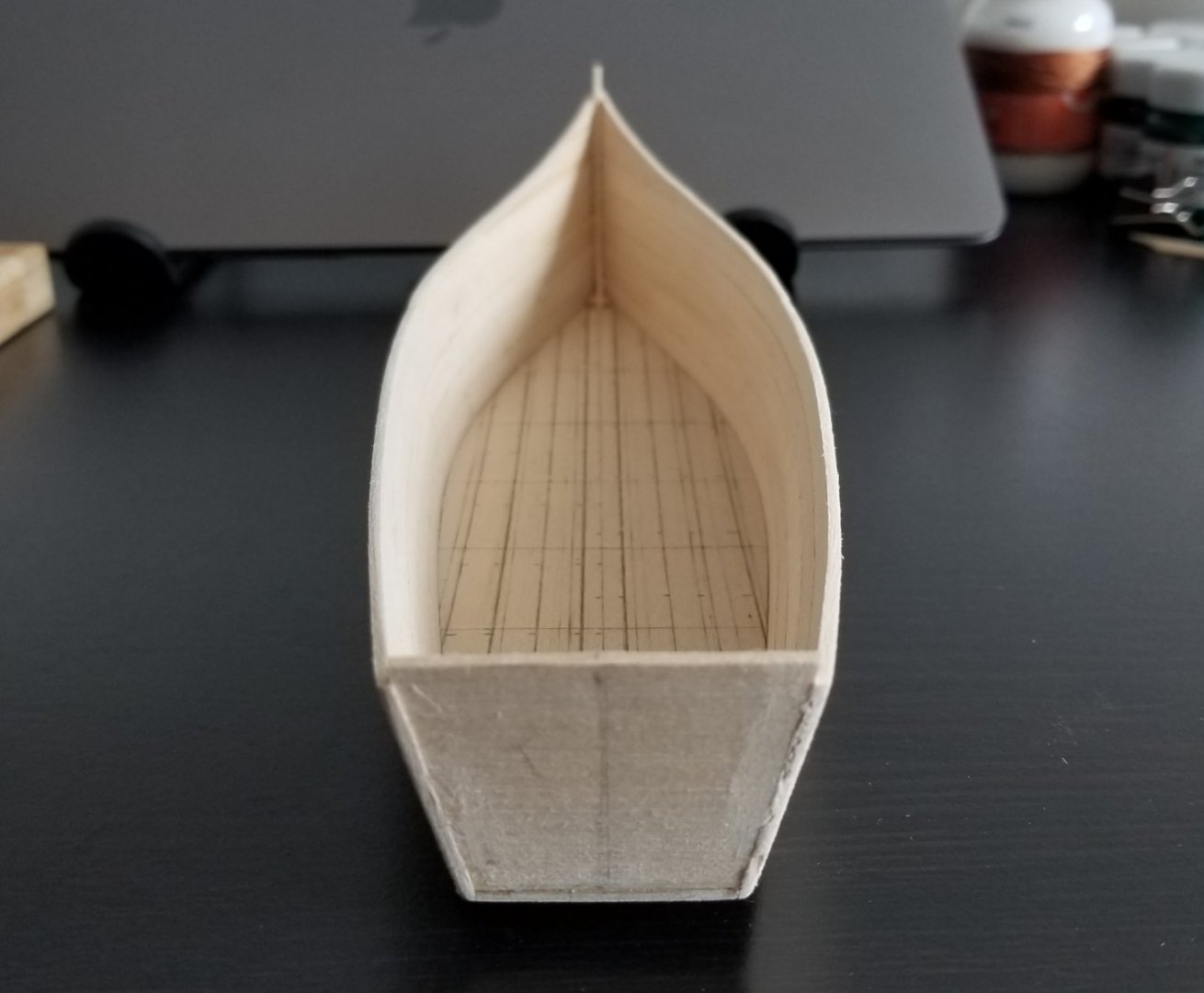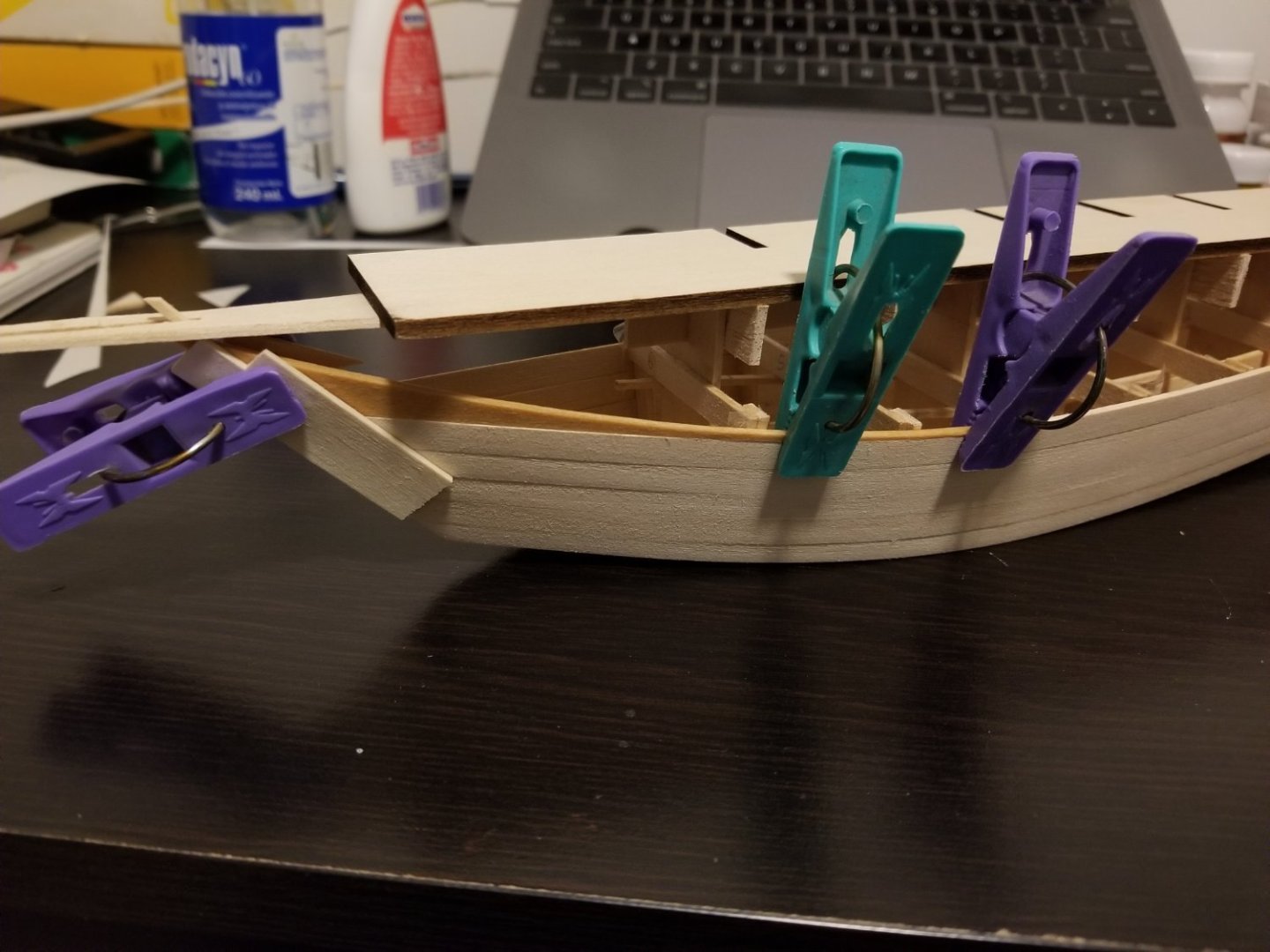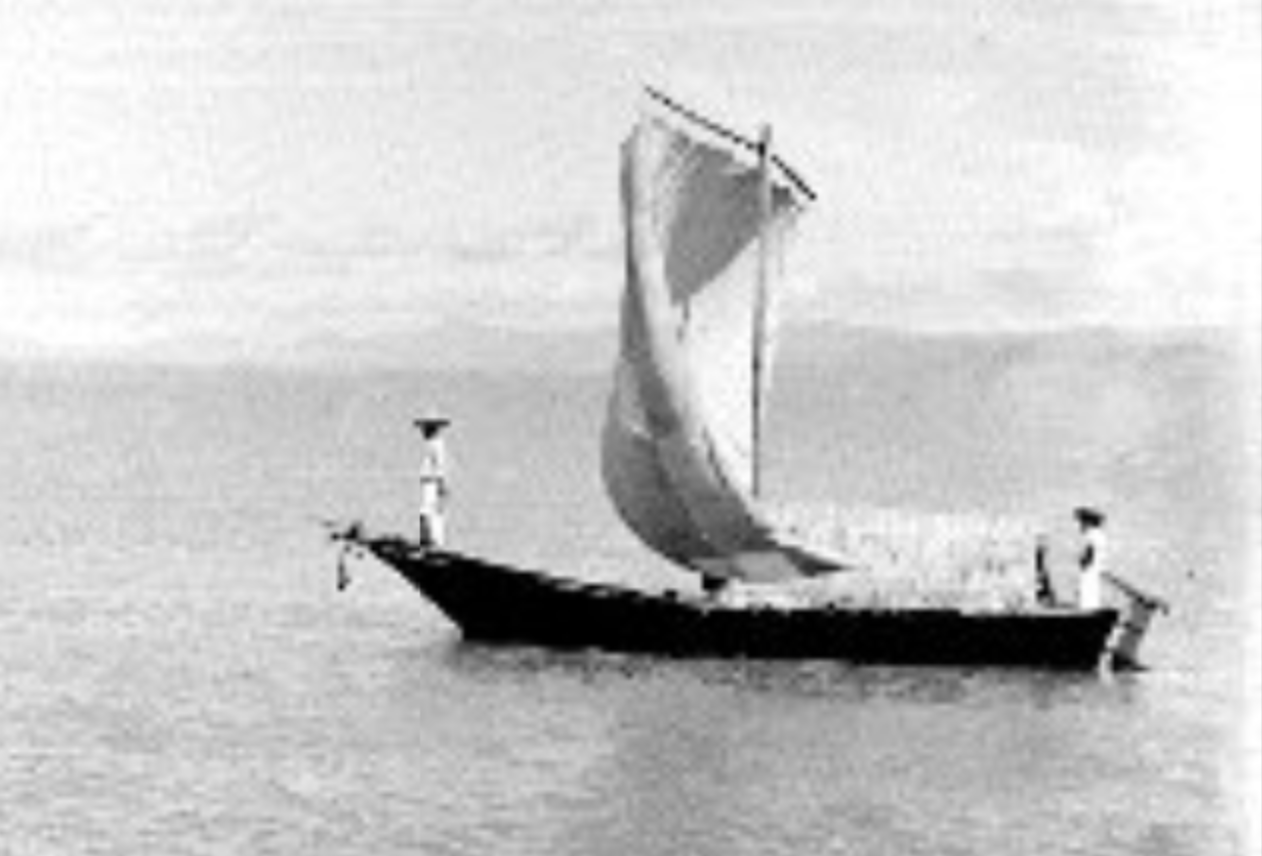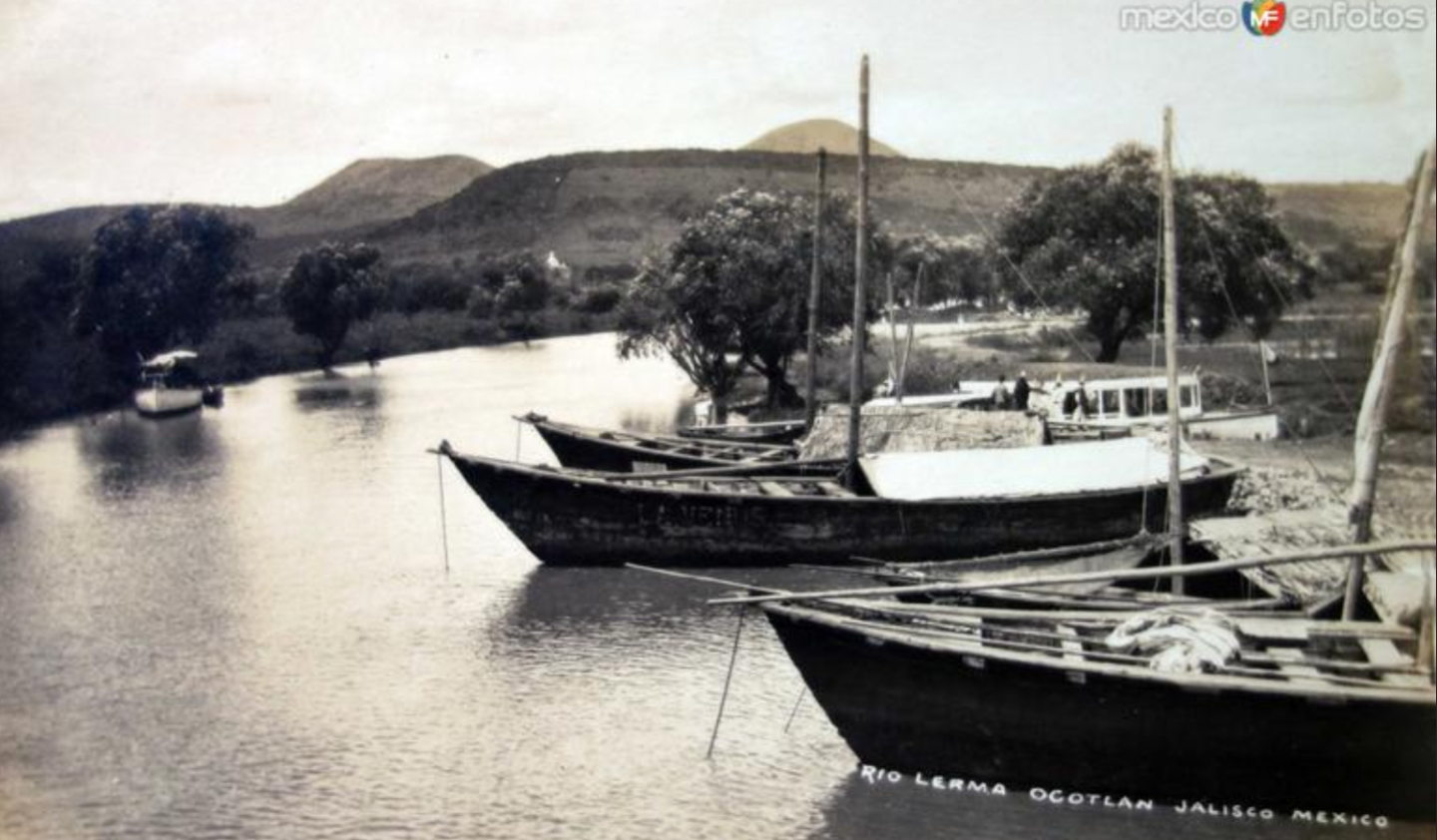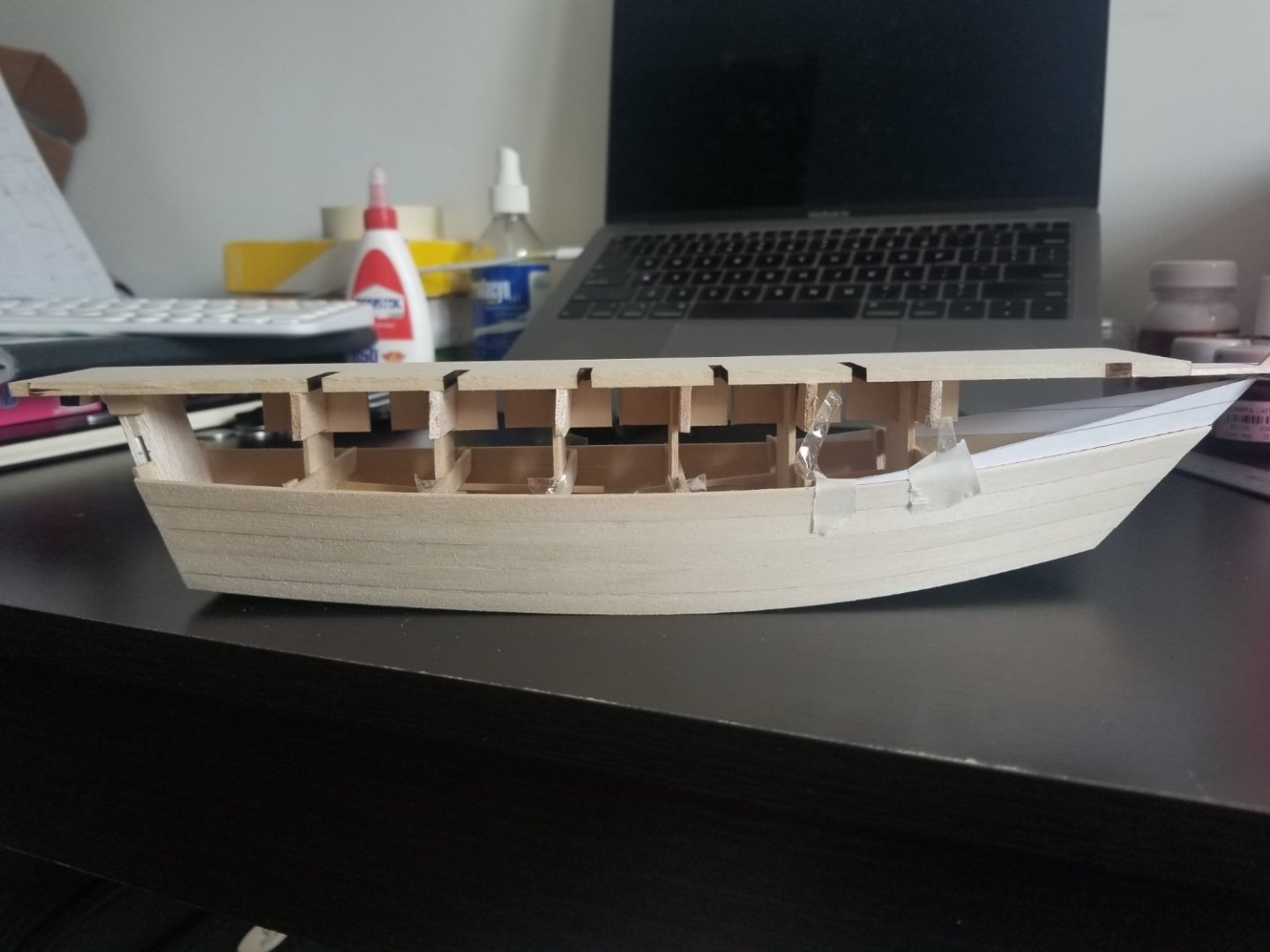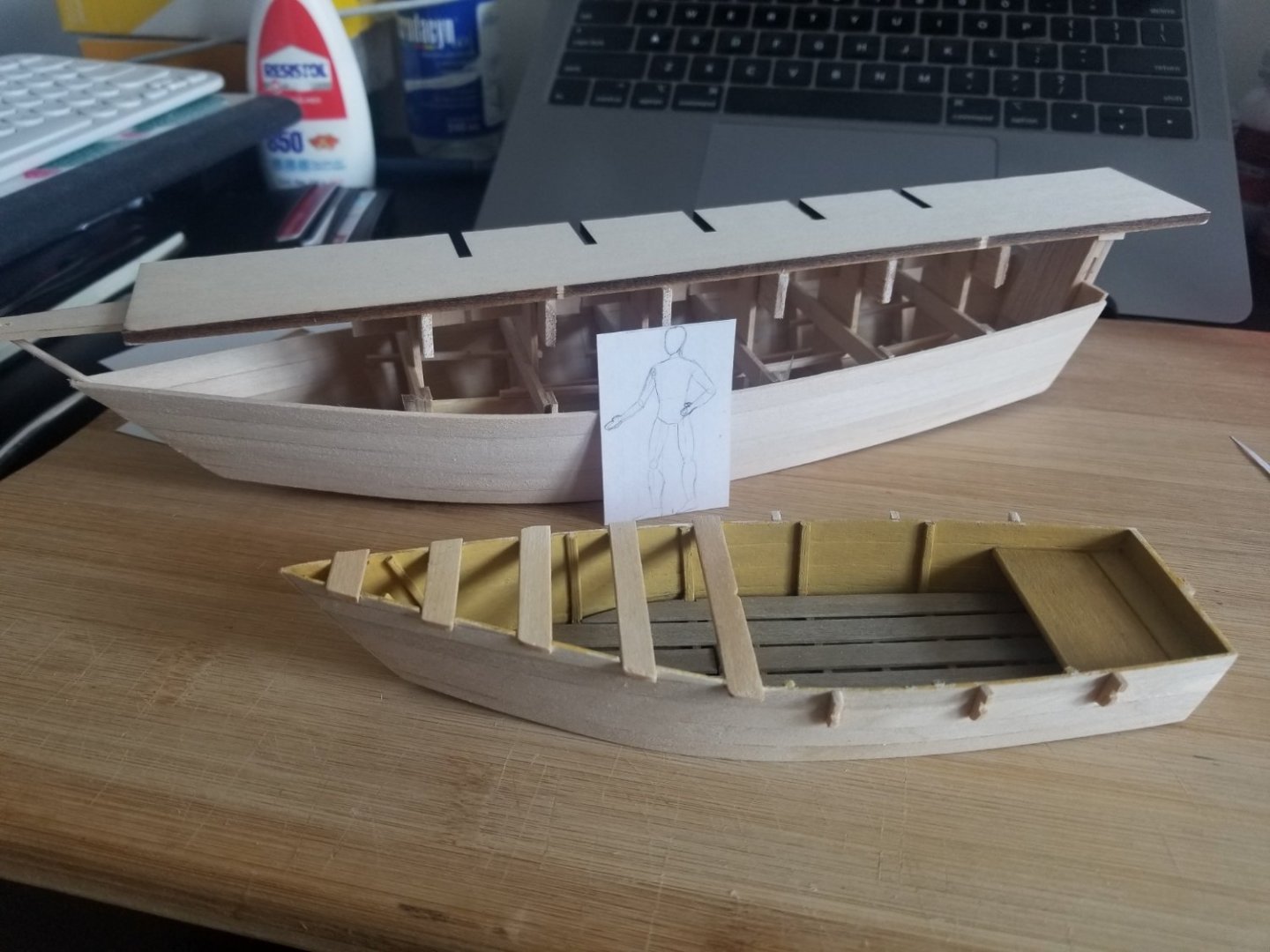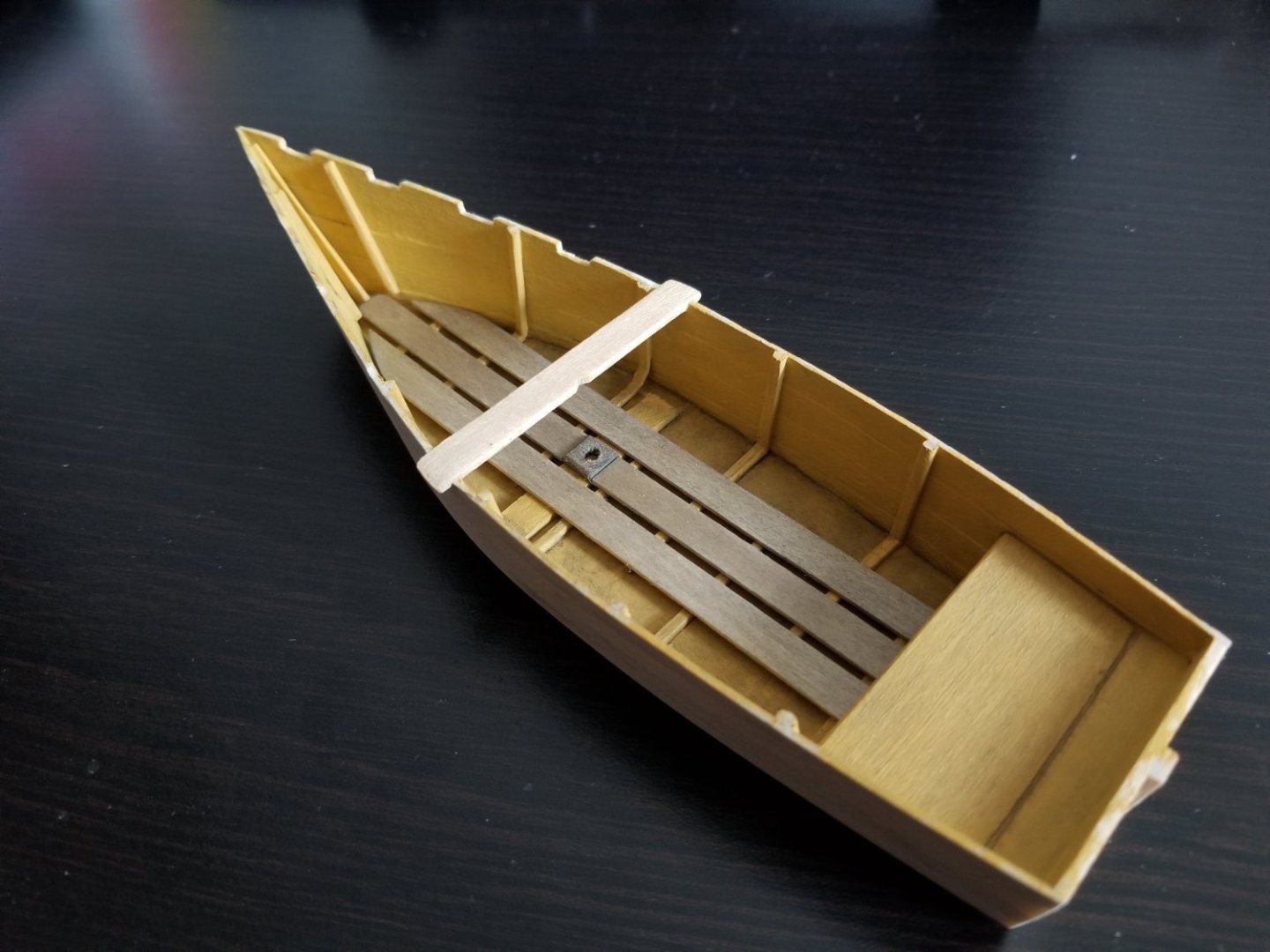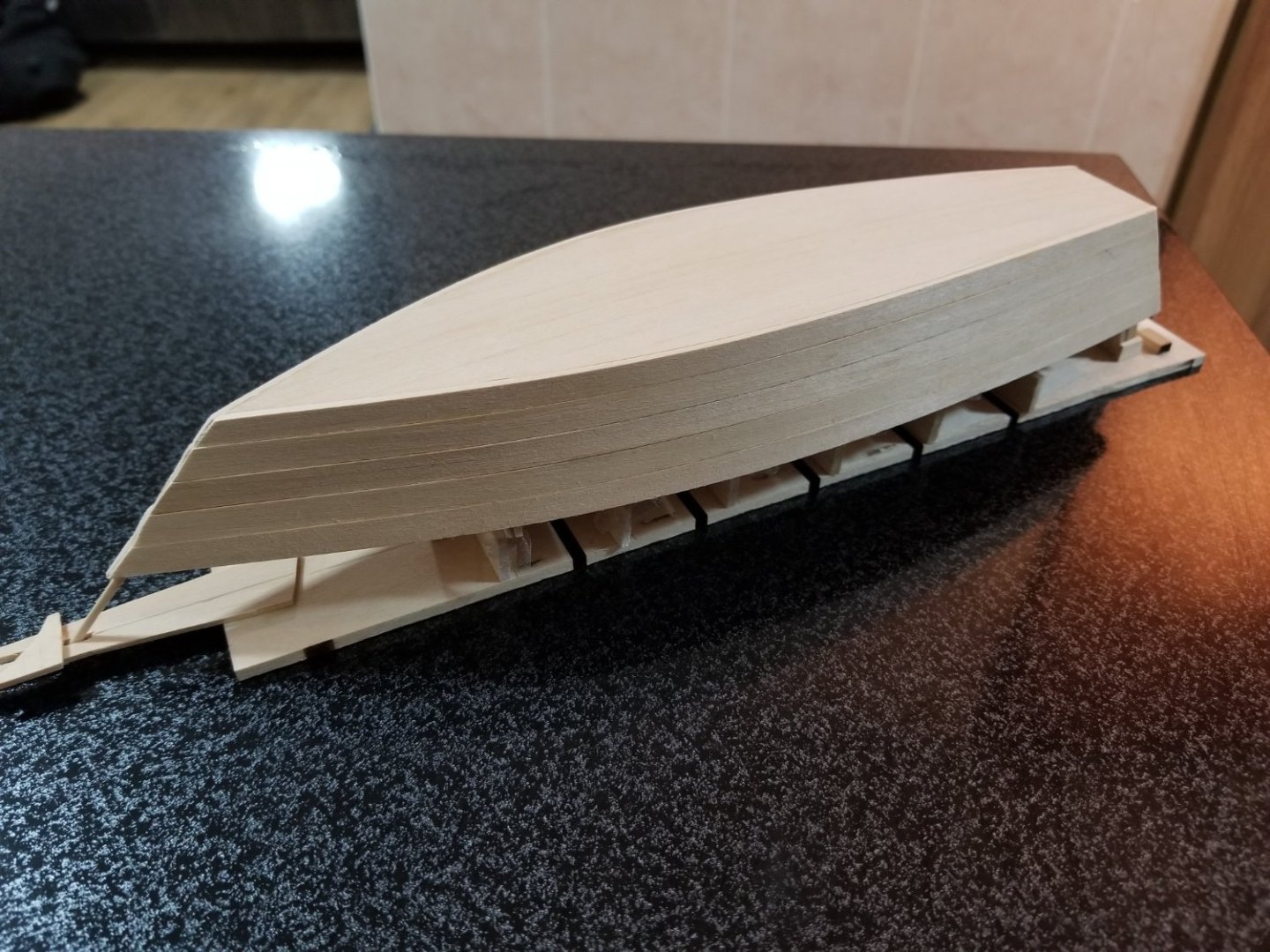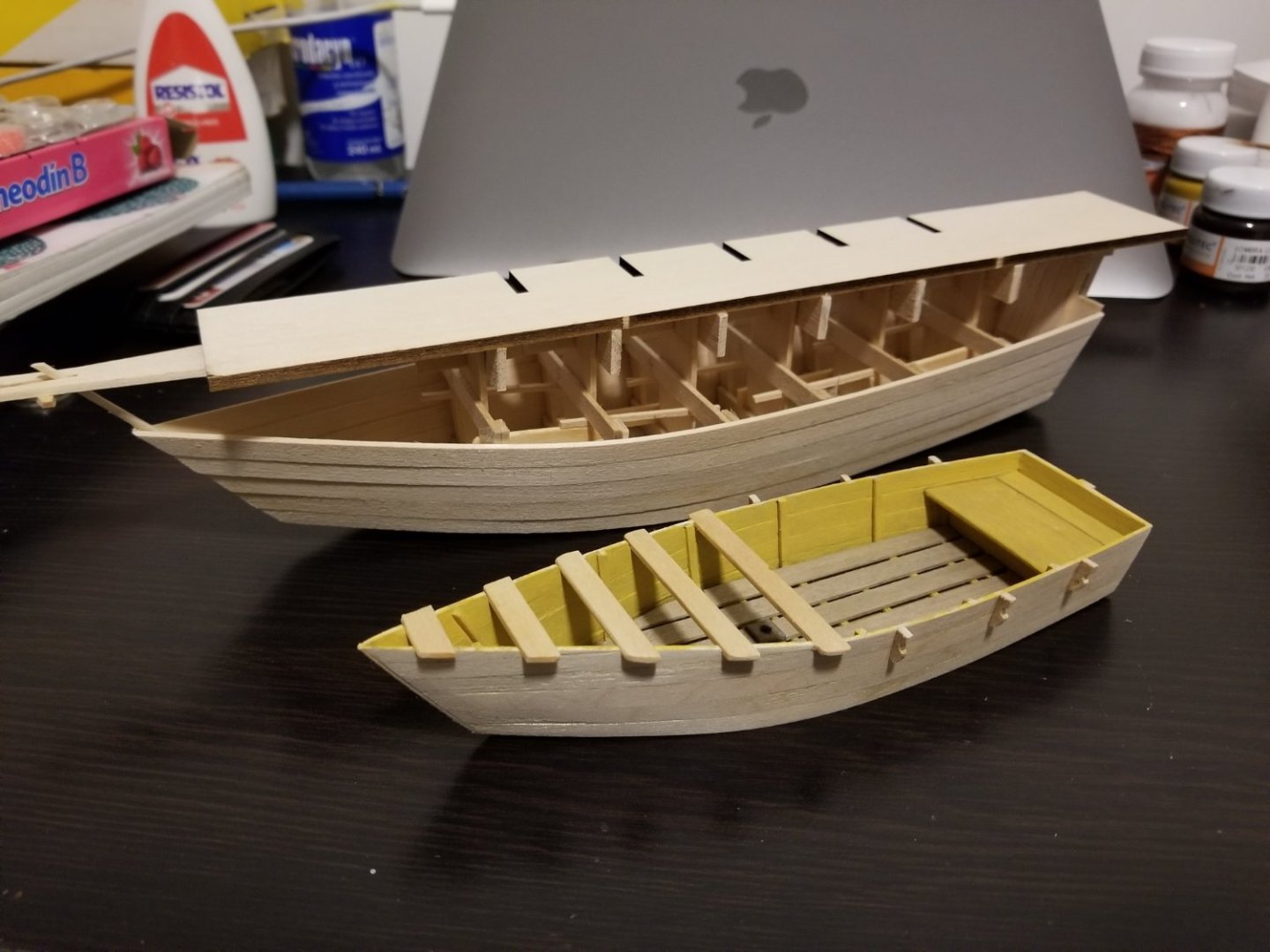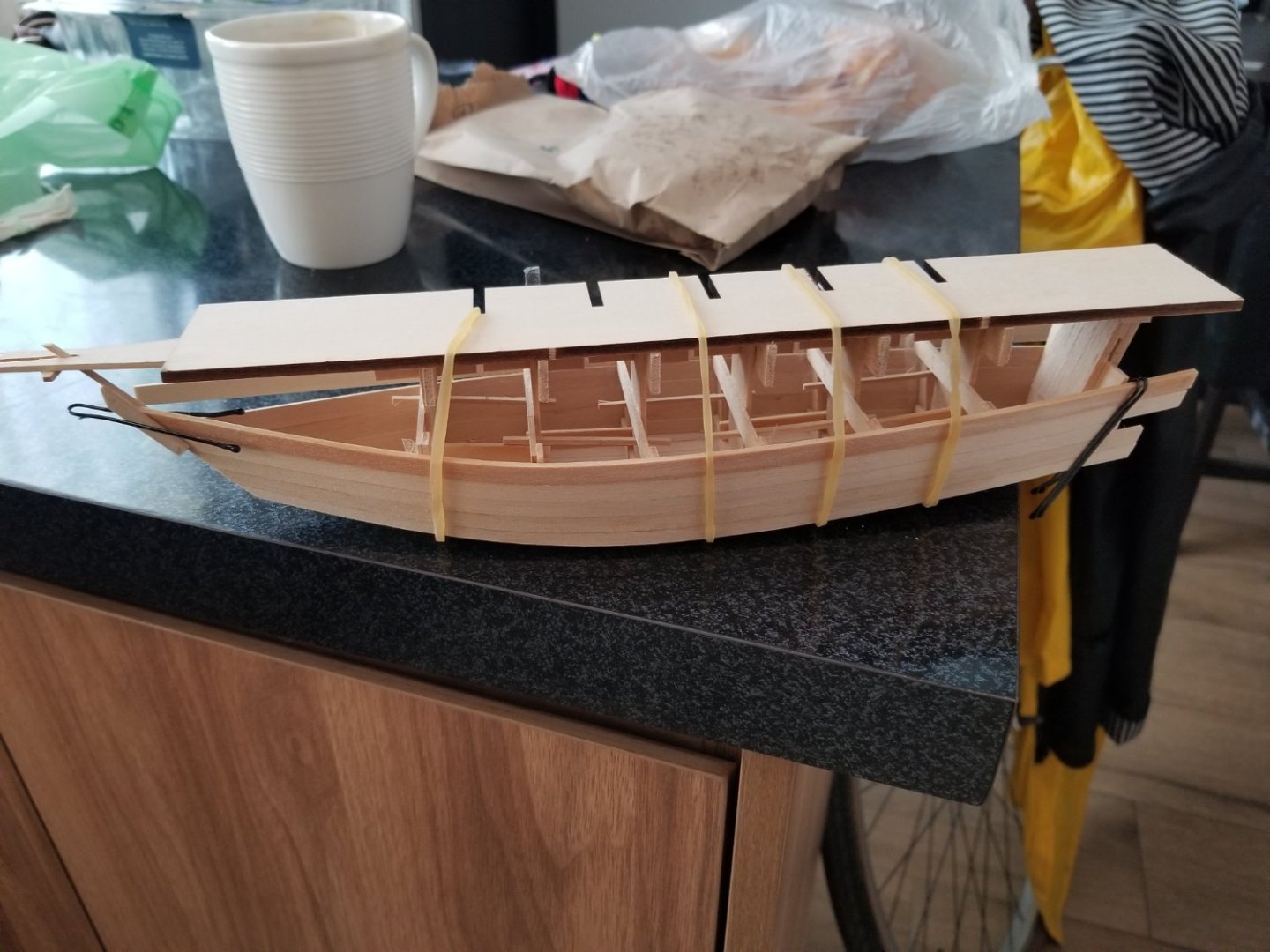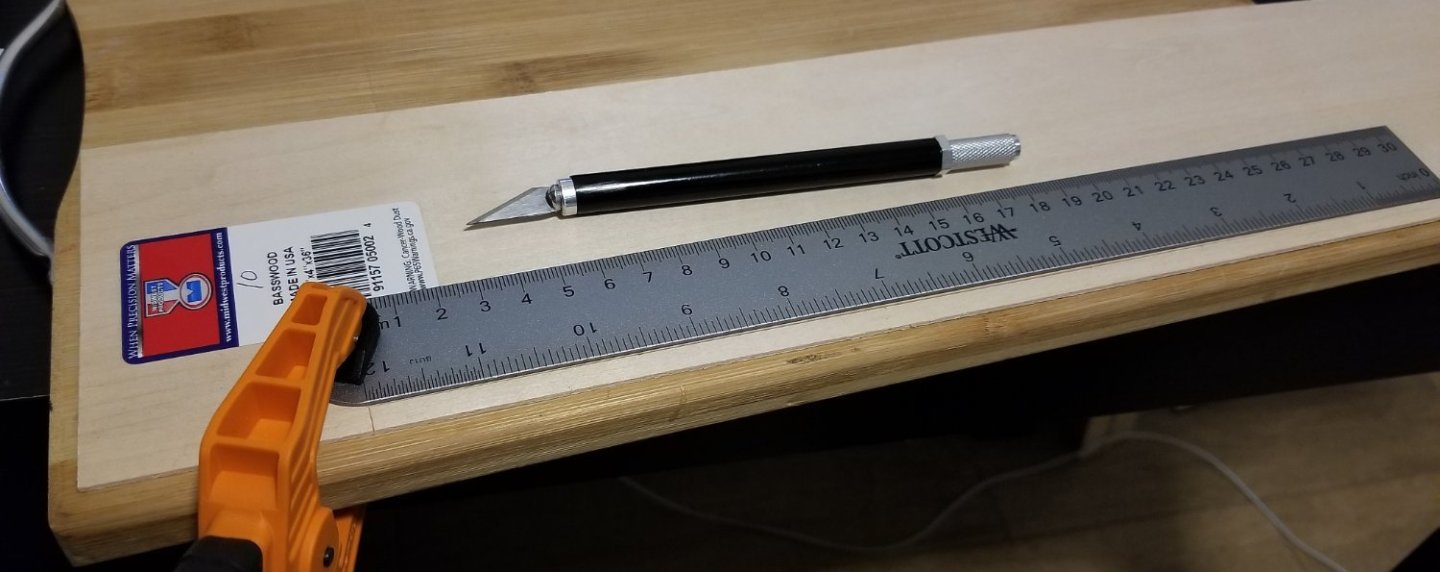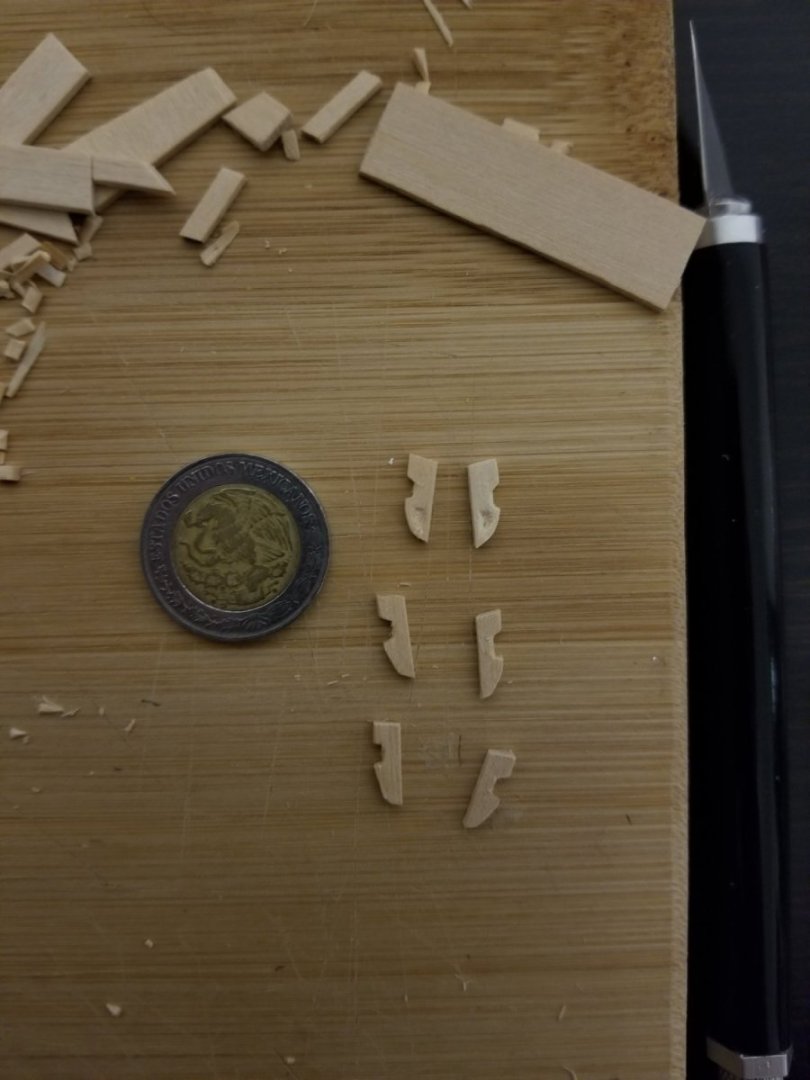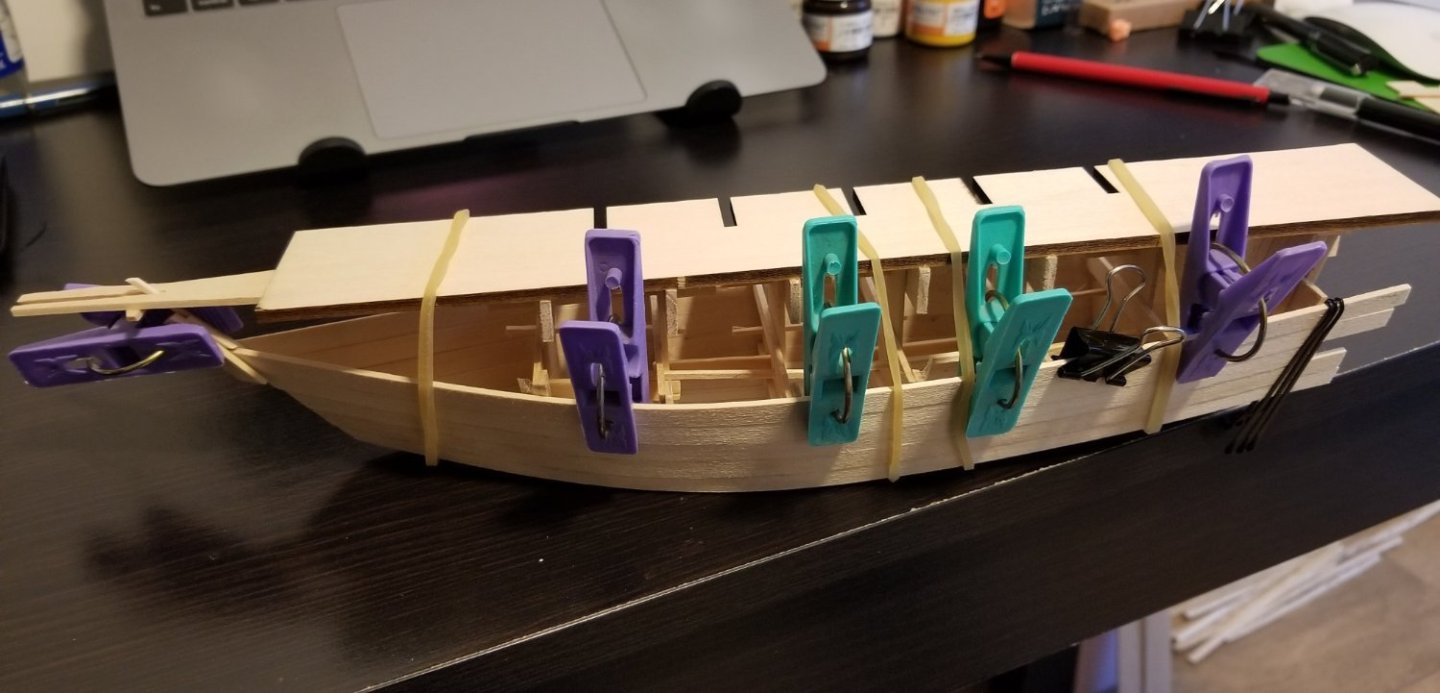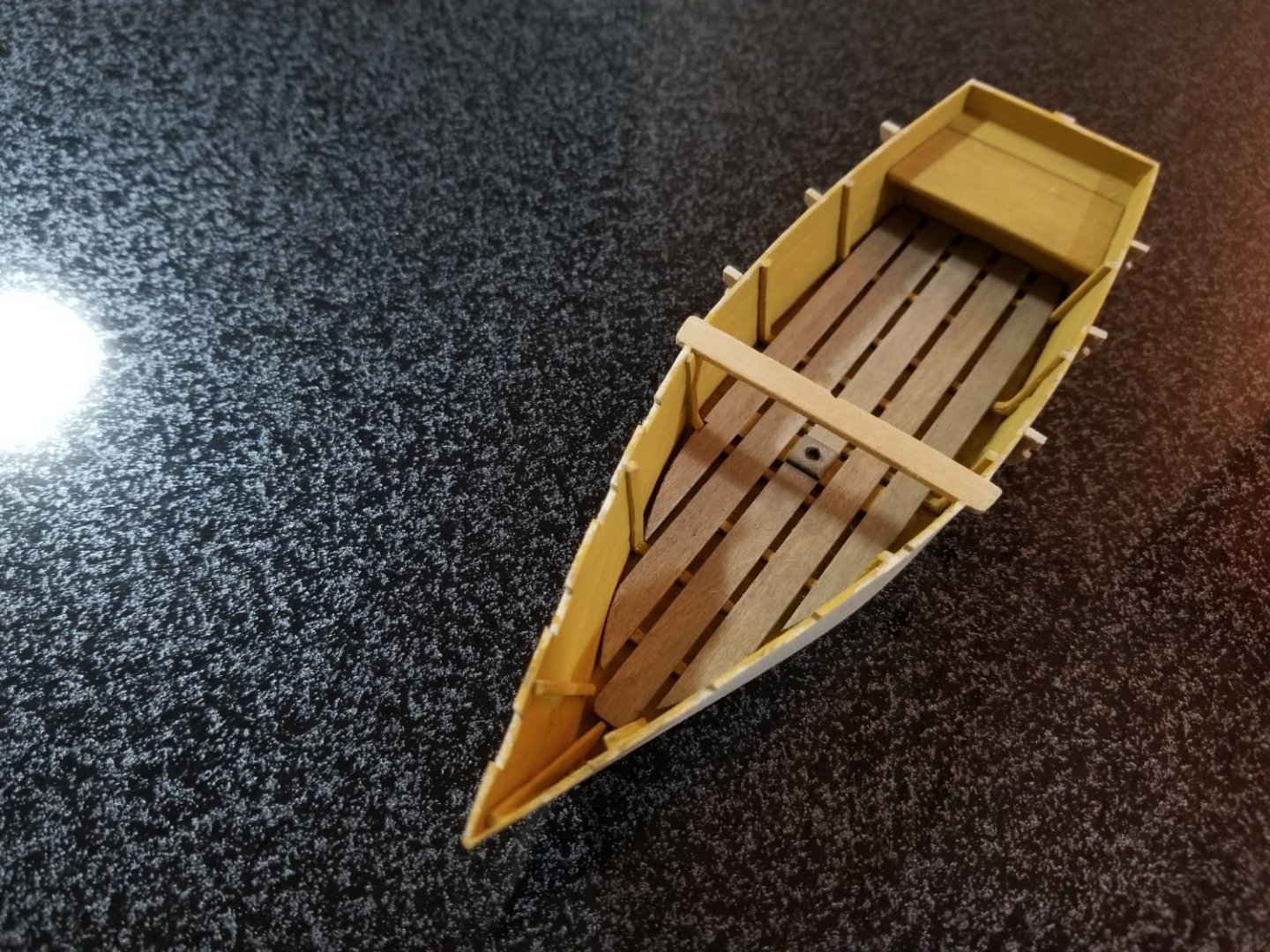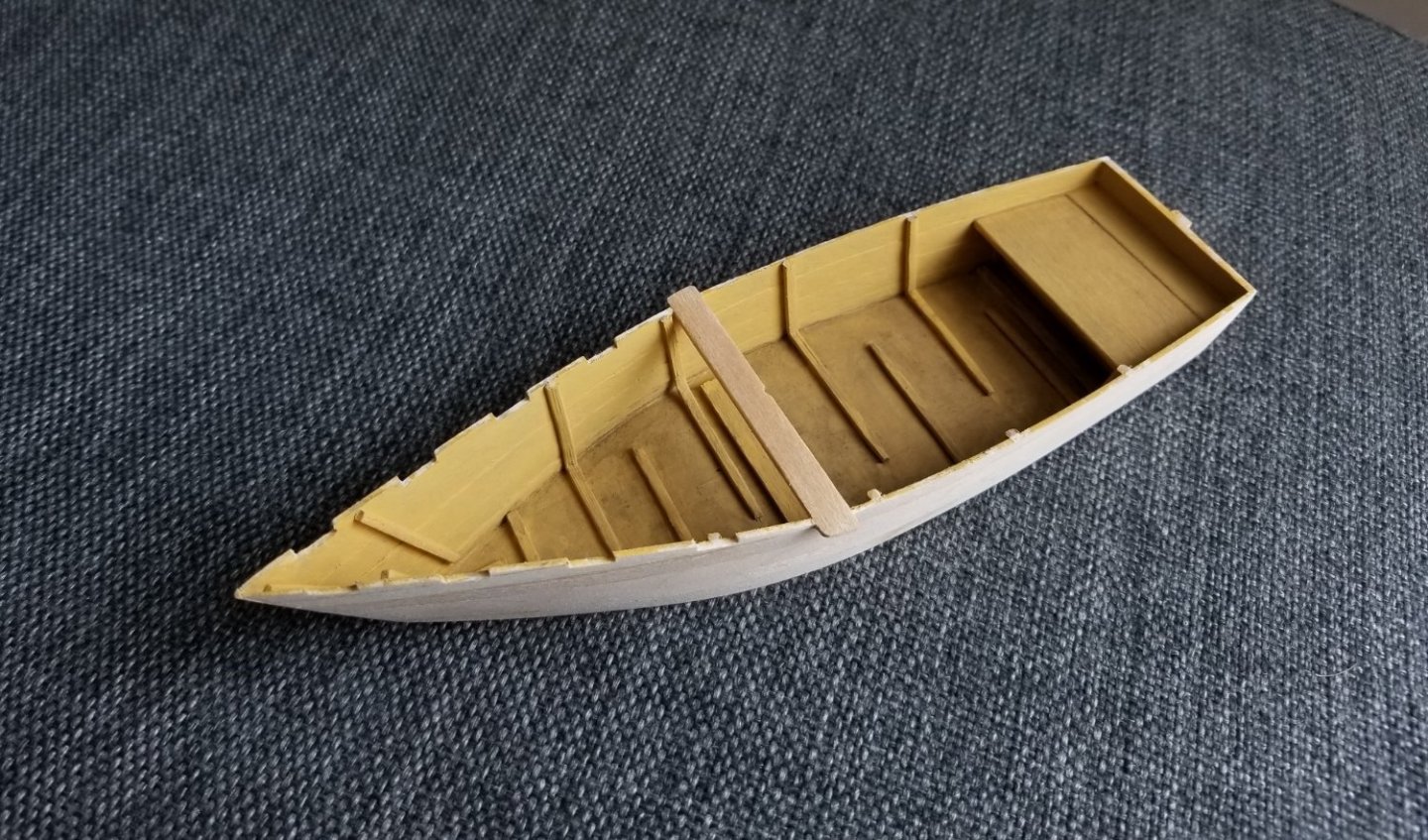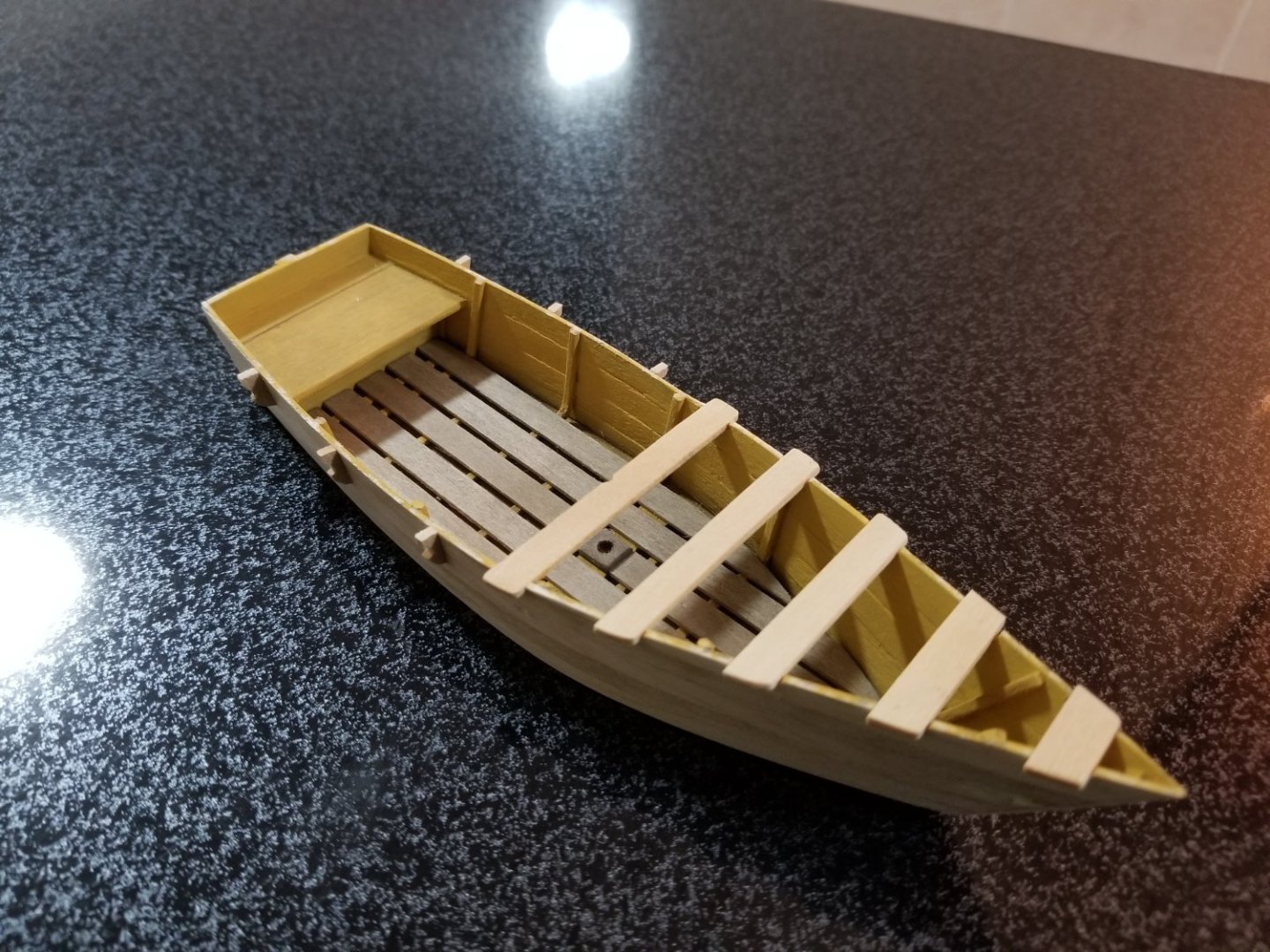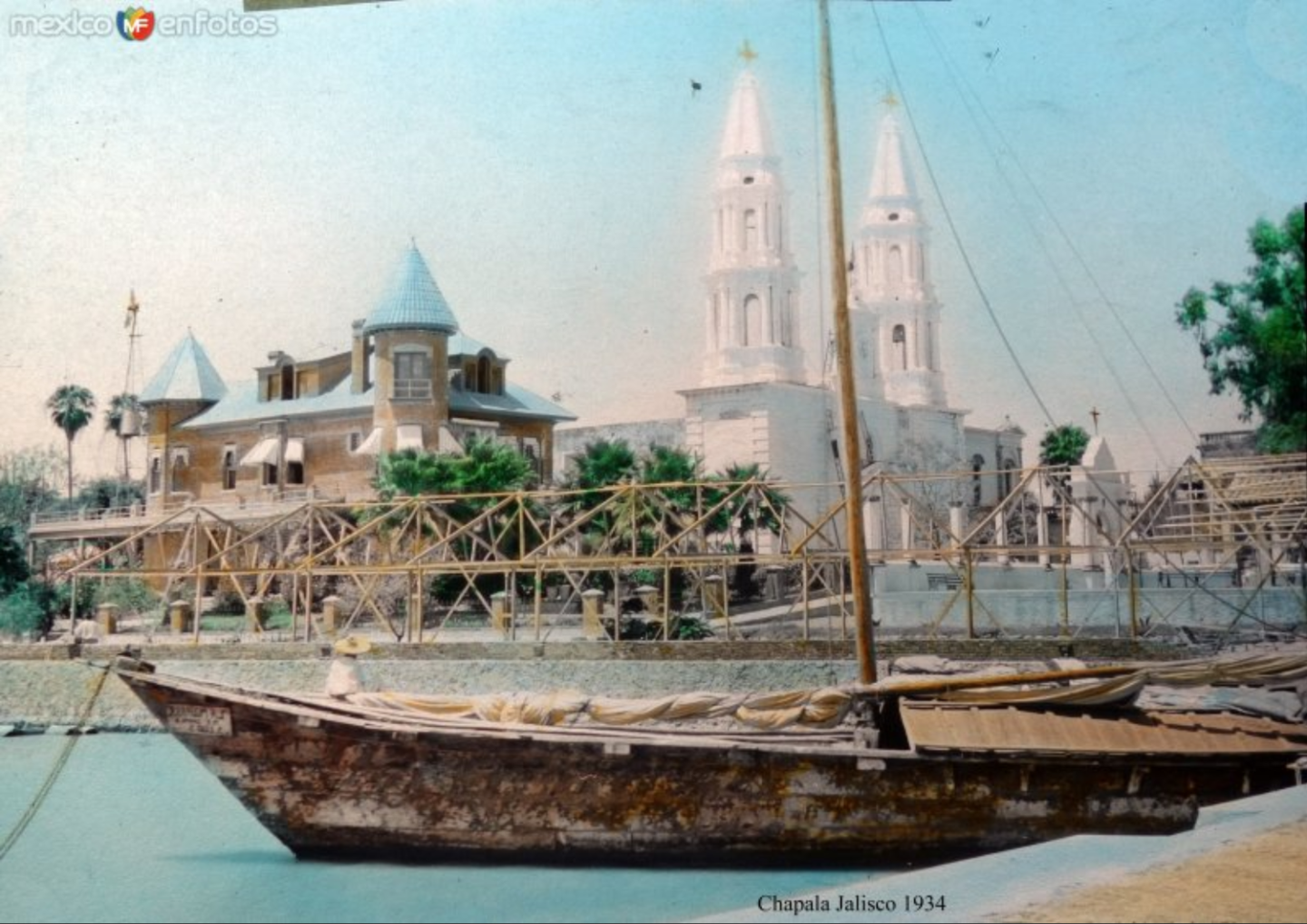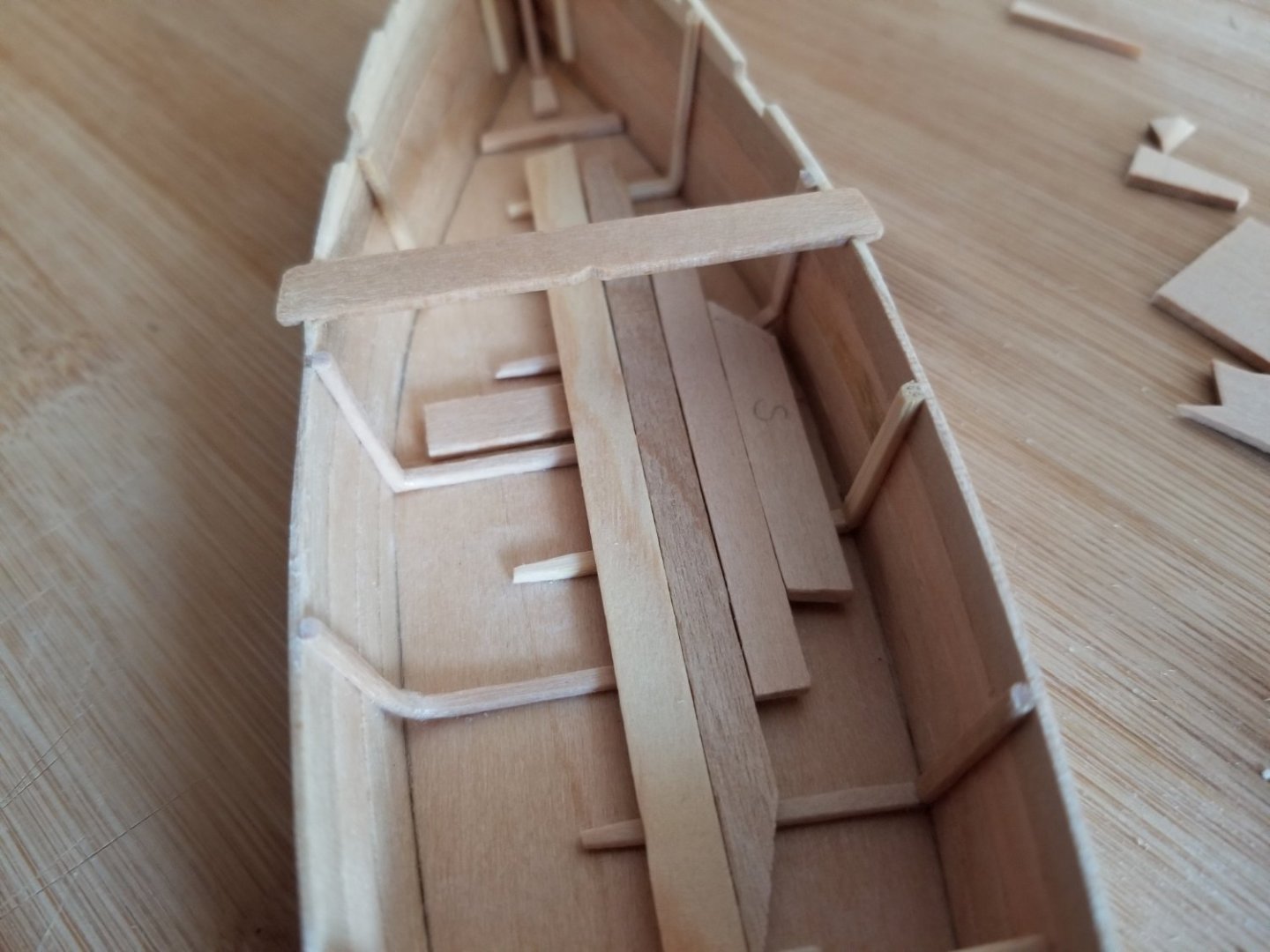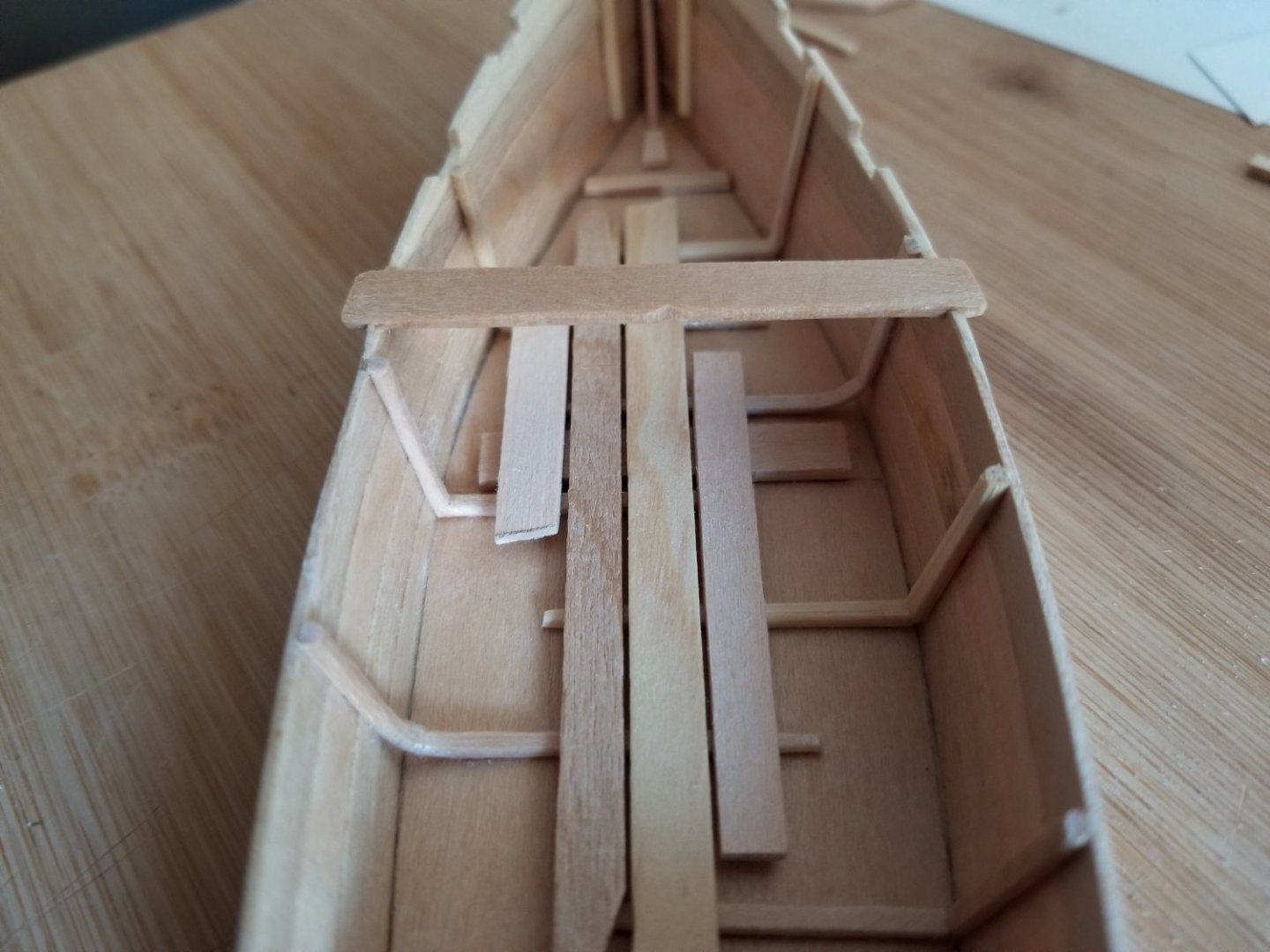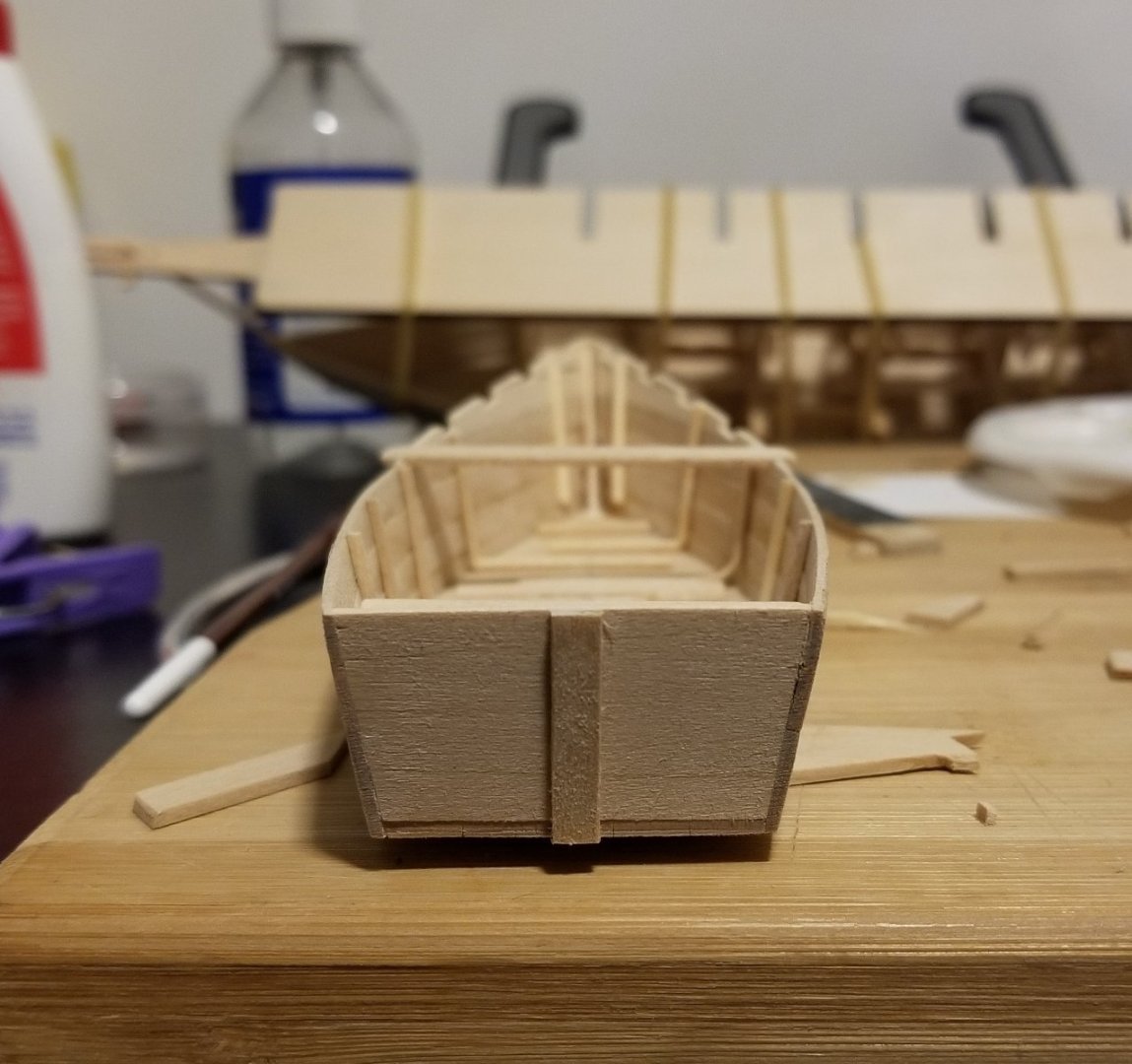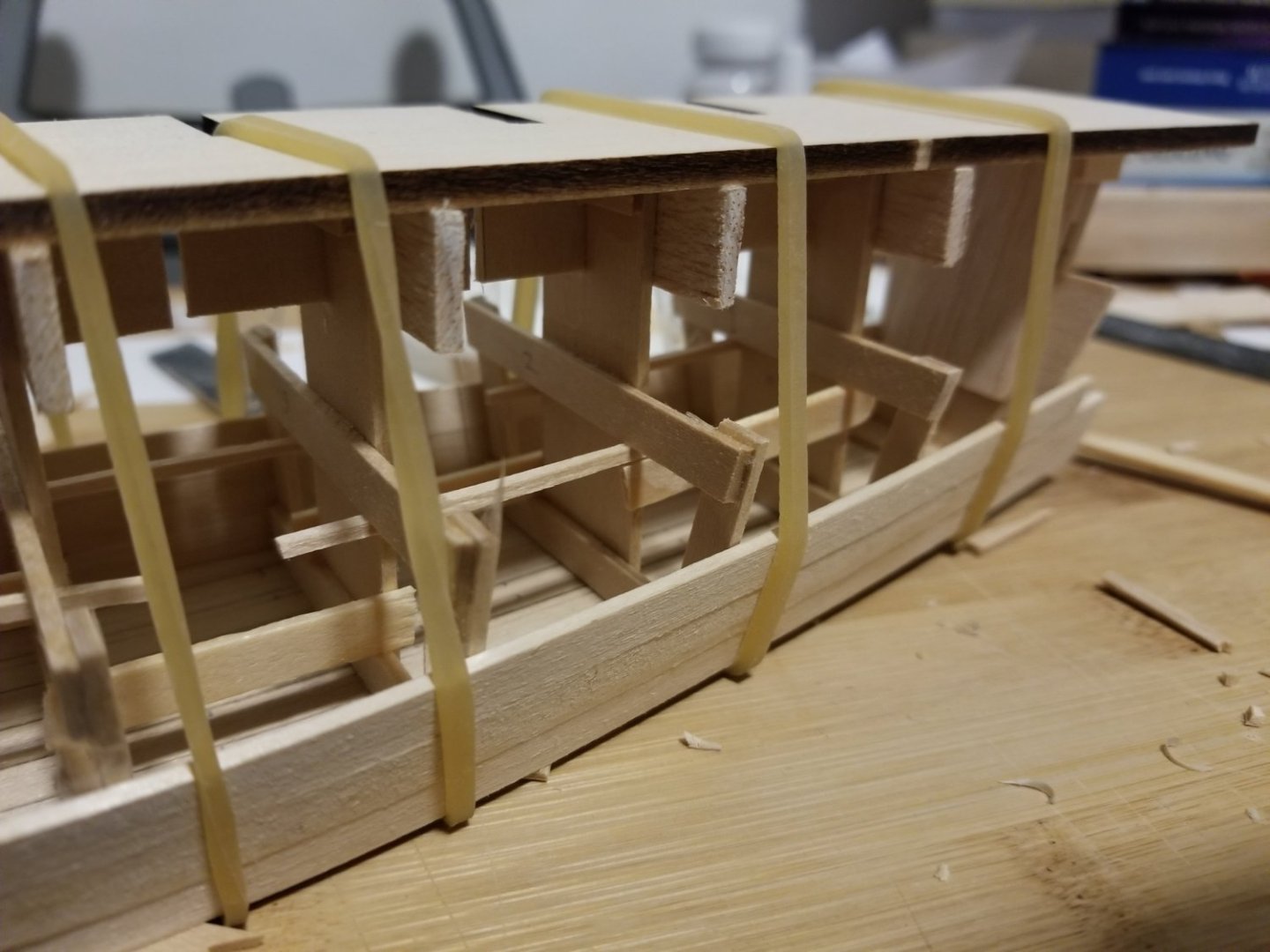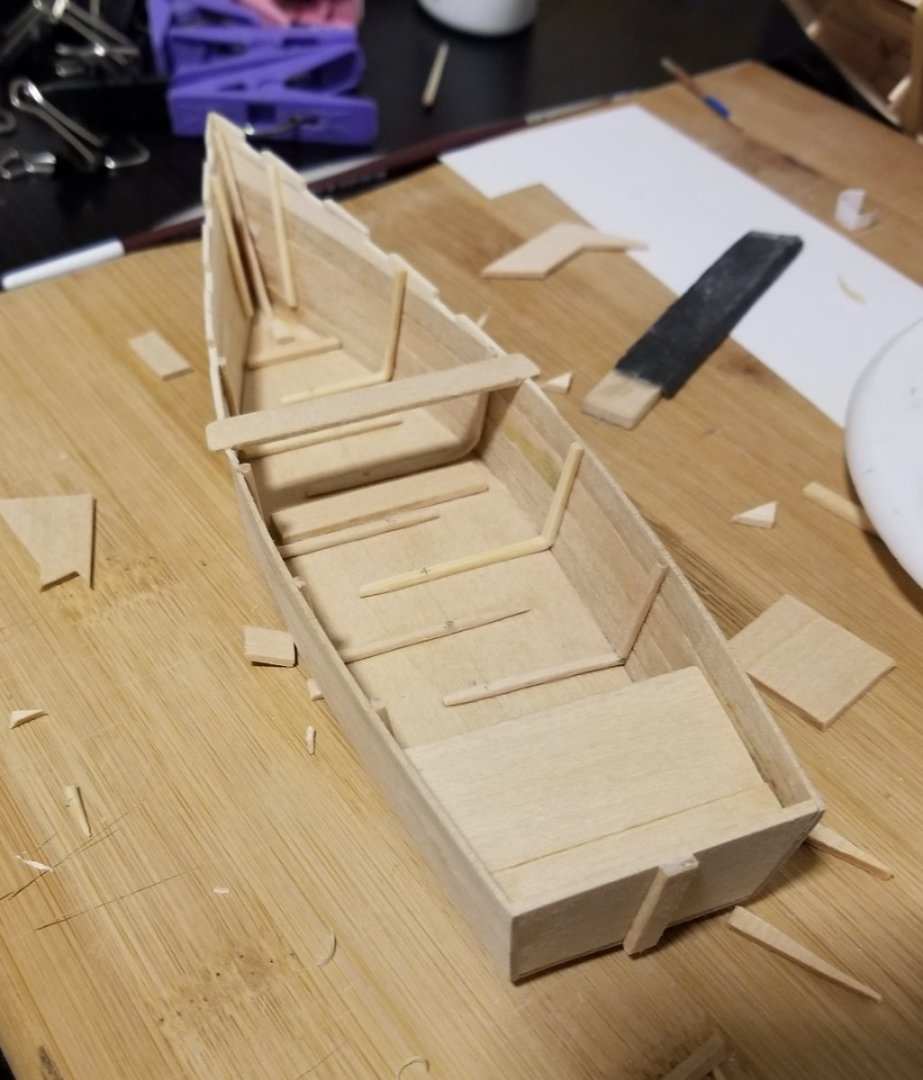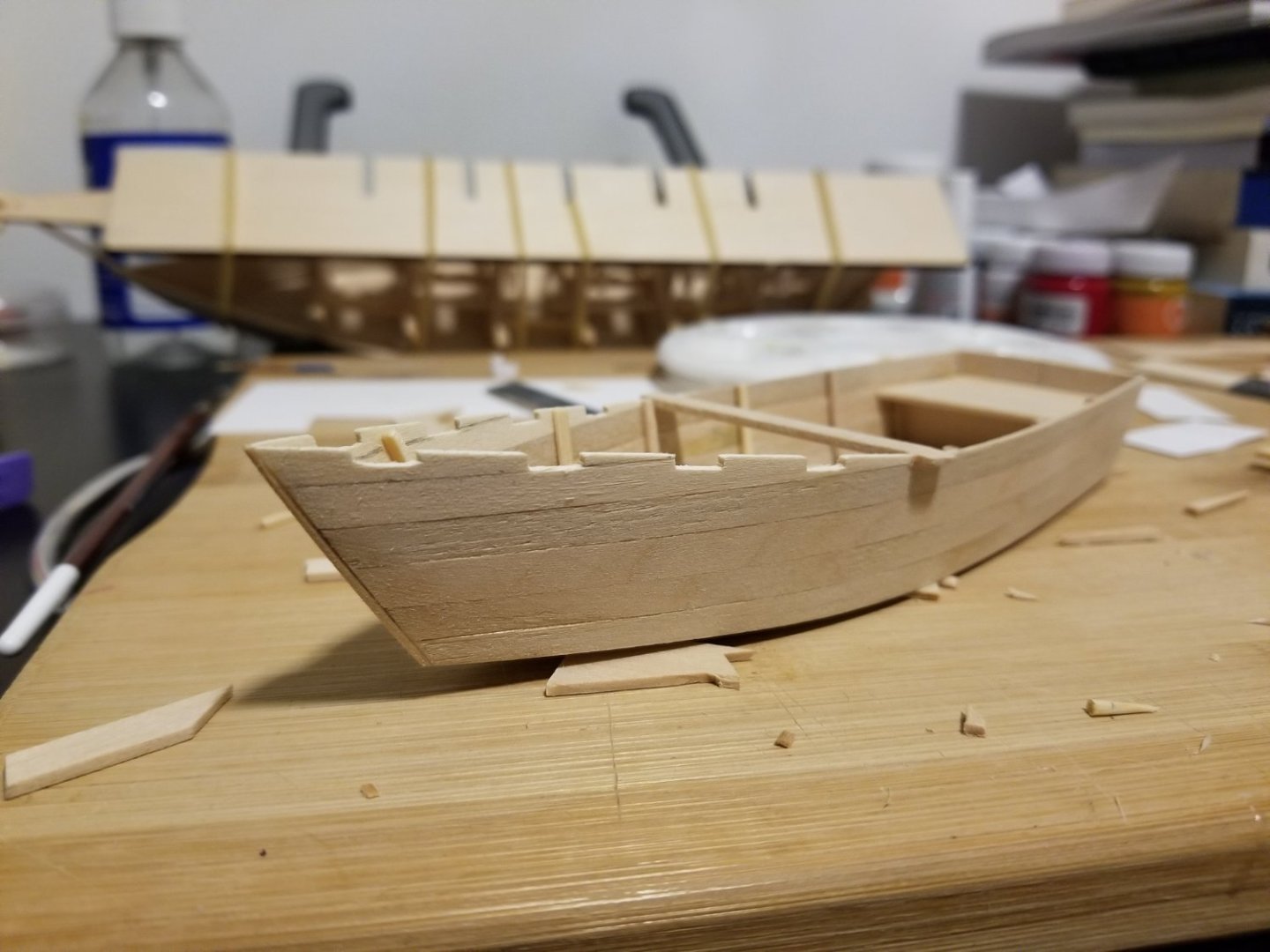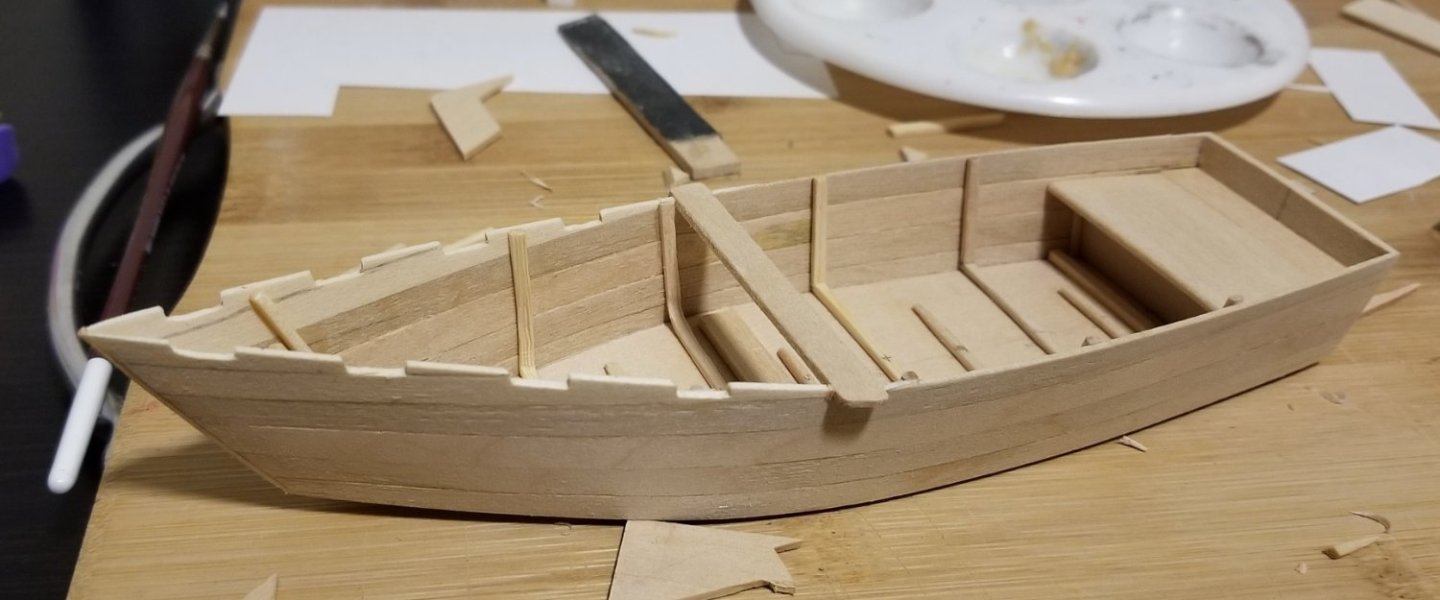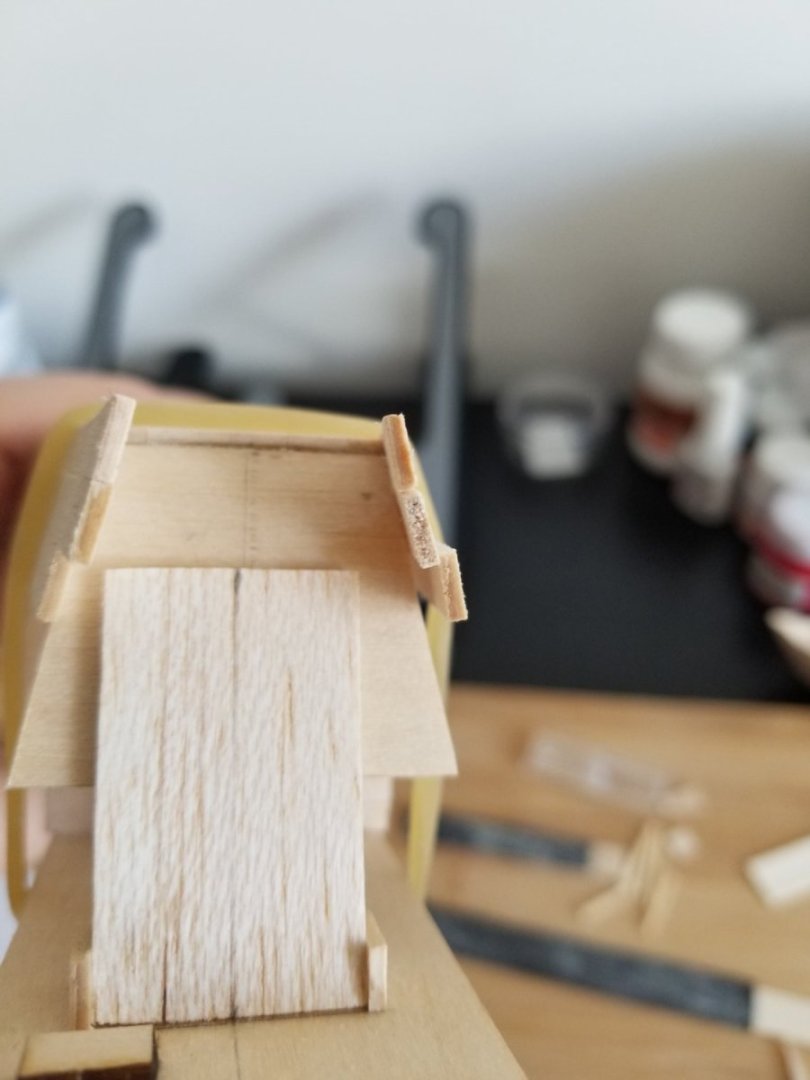-
Posts
1,229 -
Joined
-
Last visited
Content Type
Profiles
Forums
Gallery
Events
Everything posted by JacquesCousteau
-
Very brief note. First, feeling a bit frustrated with sanding the rails, I switched gears a minute to make the hinges for the stern box lid/helmsman's platform. No photos of this, so just a guess on the shape. I cut them from card and made the hinge barrel from a bit of toothpick sanded down into a tiny cylinder. I also added tiny dots of glue to represent the screws, although in the future I would try to get them smaller. I'm happy with how they turned out and think they add something nice to the build. Second, both rails broke at the joint when sanding and had to be reglued. The joint is really small due to the difficulties of cutting it into 1/32-inch-thick pieces. But, the rails have been sanded, getting off most of the old color, and they're ready for the next round of painting.
- 286 replies
-
Thanks! From what I can tell the rail was used for seating (especially on smaller vessels like my Cargo Canoa), and on larger vessels people often stood there and on the crossbeams for poling and moving around the boat. There were also a number of points on the rail for belaying ropes.
- 286 replies
-
Thanks! You'll definitely have to check out Xochimilco next time. Unfortunately the only images in color that I have of Canoas de Rancho (which are very few) seem to be hand-colored. The image you're referring to is the one that looks to me like it was done with the most care, but of course I have no real way of knowing. It looks better, though, than something like this: (Source: https://www.mexicoenfotos.com/MX13229838190754 ) The original black and white image is actually also available, in very high resolution, at: https://digitalcollections.smu.edu/digital/collection/mex/id/2308/rec/26. There's nothing in the original to suggest that one canoa a different color than the others, all are the same tint. Most importantly, the flag shown above is a complete fabrication by the artist. The only trustworthy color images that I have are later and only for smaller fishing canoas, but some may still be helpful. The following photo depicts what was likely a pretty typical sort of splotchy coloration that may well represent some of the canoas de rancho I've seen that have dark upper sides fading to a lighter shade. (It also shows the water lilies, introduced in the late nineteenth century, that quickly spread and began taking over the lake, leading to recurrent anti-lily campaigns. In Ramón Rubín's La canoa perdida, most of the protagonist's funds to buy the titular fishing canoa come from a stint pulling out and burning water lilies for the hydroelectric company.) Source: https://www.mexicoenfotos.com/antiguas/jalisco/chapala/pescadores-en-el-lago-de-chapala-1958-MX15186632784160/3 But other fishermen went a different route. This image, for instance, does seem to show painted hulls. Source: https://www.museocjv.com/chapalapostaless.html On the issue of hull painting, while the black and white photos aren't very clear, there are a number that show an evenly-tinted light-colored hull, often with a name painted on in dark lettering, as in La Gaviota below. (The name is a bit blurry in the photo, but the caption does include it). That's why I went with a white hull for the Cargo Canoa, although I'm going to do something different for the Canoa de Rancho. Source: https://mediateca.inah.gob.mx/repositorio/islandora/object/fotografia%3A433841 Incidentally, La Gaviota also shows off some common accoutrements like the anchor that I'll have to make later. Thanks! One more quick thing about the coloration before getting to the rails: according to José María Angulo Sepulveda, these boats were caulked with a mix of tar, beef tallow, and cotton tow, which undoubtedly contributed to the coloration on at least the unpainted vessels. As for the rails. First, thanks for explaining the name! I hadn't realized that the "cap" actually was because they capped the frames, but that makes perfect sense. My photo evidence is blurry and a bit unclear, but I think photos generally show that the frames were not capped by the rail. In the photo below, I've circled three such frames. The bottom left frame passes behind a crossbeam before seeming to end well inboard of the rail, and the middle top frame also seems to end in a squared off cut that's not covered by the rail. The top right frame looks almost like it extends up past the cap rail, although I haven't seen that on any other vessels, so I wonder if they will be cutting off the top before finishing the vessel. The other frames look like they taper at their top ends. Source: Minute 5:52 at https://www.youtube.com/watch?v=oHbBKiYs3QU Also, it's much less clear in this photo, but I think you can see the tops of frames on the port side of the hull (right side in the photo) that are not covered by the rail. Very hard to tell, though. Source: https://www.youtube.com/watch?v=oHbBKiYs3QU But, some other photos are less clear. These frames may be covered by the rail? Source: https://mediateca.inah.gob.mx/islandora_74/islandora/object/fotografia%3A140967 Finally, it is clear that the frames in the smaller fishing canoas were usually not covered by the rail. Source: https://www.mexicoenfotos.com/MX14140215743756 Source: https://mapio.net/pic/p-33141234/ But, sometimes, maybe they were. Source: https://www.mexicoenfotos.com/MX15570248148348 As for why they wouldn't cover the frame ends, I really don't know, it would make more sense to cover them. But, if the photo above with a frame possibly extending above the rail is any indication, I almost wonder if they added the frames after attaching the rails, or if they only cut the frames to size after the rails were on. In any case, it's tricky to tell what's going on with those frames, so any suggestions are much appreciated!
- 286 replies
-
Work has slowed a bit, but I've made some progress. First, the Canoa de Rancho. I'm taking my time with sanding and smoothing the hull, as it's pretty tedious work. Thankfully the 1/16th-inch-thick planking can take a good bit of sanding. I've also started figuring out the frames. Unlike with the Cargo Canoa, I won't be trying to make each frame from a single bent piece of wood. Instead they'll be made of two pieces, one along the bottom and one along the side. As long as I get the angle of the cut right, the joint shouldn't be too noticeable, especially once the floor planking is in. The main issue has been trying to figure out the right thickness for the frames. Originally I was going to go with 1/8th-inch square wood, as I have some left over from the dory build. This corresponds to 4-inch thick frames on a real vessel, which seemed reasonable from photos, but it looked much too thick when I test-fit some pieces (which still needed final shaping). I toyed with the idea of reducing the number of frames, but it still wasn't looking right. Instead, I'll be reducing the pieces down to 3/32-inch thickness (corresponding to 3 inches). This seems like it will look about right. Now I just have to make and shape all the frames, and finish sanding the hull. On the Cargo Canoa: I decided I liked the look of natural wood for the crossbeams, so I attached those without painting. I also added a waterline, painting below it in a dark brown. This was a bit of a guess, color-wise, as most of my photos are in black and white, but a number of them do show hulls that are darkened below the waterline, and I don't think it's just the water itself darkening the hull. Next up, the cap rails, which have given me trouble. I outlined them on a piece of paper, then transferred the shape to a 1/16-inch thick board with a pin, then cut it out. I purposely cut it wide so it could be better shaped later (which is why it looks so terrible in the photo). I had decided to use the 1/16th-inch wood based on trials with some scraps, but the full cap rail looked much too thick. After briefly experimenting with sanding it down a bit, I decided I'd have to redo it in thinner wood. The problem is that I don't have much 1/32‐inch-thick wood left from the dory, so I had to make the rail of multiple pieces with a small splice joint. (This is actually accurate to the actual vessels). Anotger issue is that I originally planned on having the cap rails overhang the interior of the boat a little such that they rest on the frames. This seemed accurate from a few photos, but a more detailed look suggests that I was wrong and the rails should just be attached to the side planks and extend outward (where they're propped up by the crossbeams and supports). This means that 1) I needed to be pretty precise with shaping the inside edge of the cap rails, and 2) I needed to lightly sand down/round off the top of the frames and repaint them, which requires color matching the interior (which is not straight ochre). I was able to make the rails, but they brought with them another problem. The 1/32‐inch basswood is substantially lighter than the 1/16-inch wood used for the crossbeams, so the natural wood color looked much too light. So I painted them, slightly lightening the brown I used for the bottom. (I will be lightly sanding the outside edge once they are attached to the hull, which will make the rails more even and smooth). However, I ultimately don't like the color they turned out. The brown works for the bottom, and seemed fine in tests with painted scrap, but it looks oppressively dark on the entire cap rails. I had no luck with multiple attempts to mix something lighter, which is an area I need to work on for the future. (Just a test fitting, the rails haven't been glued yet.) So, I bought some lighter brown paint. Now I will be sanding the darker paint off the rails, repainting them, and then finally attaching them. Oh and also making the aft rail, too. Hopefully the paint troubles will be over soon! Painting is definitely one of my least favorite parts of the build process, and I'm hoping to find a color scheme I like better for the Canoa de Rancho. Hopefully I can leave more wood natural.
- 286 replies
-

For Beginners -- A Cautionary Tale
JacquesCousteau replied to ccoyle's topic in New member Introductions
Thanks! I had read your page on the vessels of the Albufera, which was great, but hadn't seen the bibliography page. This is really helpful! -

For Beginners -- A Cautionary Tale
JacquesCousteau replied to ccoyle's topic in New member Introductions
Thanks, I'll definitely check that out! -

For Beginners -- A Cautionary Tale
JacquesCousteau replied to ccoyle's topic in New member Introductions
That's very kind of you to say. I would note that I did find it really helpful to build the MSW Grand Banks Dory first, which gave me at least some familiarity with the basics, and I was going to build the MSW Lobster Smack but my order was never shipped (I suppose that's what I get for trying to save a few bucks ordering from ebay instead of their site). As for scratch building, the big advantage is that you're not limited to what's available in kits. I've been able to pursue projects that are personally meaningful to me--I'm living part-time in Mexico, my wife is Mexican, and I'm strongly interested in Mexican and Latin American history--and that don't exist in kit form. The one thing I would really strongly recommend to other novice scratch-builders is to build something with plans. At the very least, it will save you a lot of worrying about whether your proportions are off, which has been a constant issue in my builds. I've decided that my next scratch builds will be based on plans, which will save me a lot of hassle. (I've already found plans for a Chilean Lancha Chilota coastal sloop, and for a Spanish lateen-rigged fishing boat like those I saw in Barcelona that got me interested in modeling, so I have those builds to look forward to). That said, I have nothing against kits and am strongly considering doing the NRG half-hull before I tackle anything with a curved rather than a flat-bottomed hull. I'd also love to do one of Vanguard's fishing boat kits in the future, when I have more space. Also, that model of the Mary Rose sounds fun! -
Ribs are looking good. That figure has quite the head of hair!
- 134 replies
-
- sea of galilee boat
- SE Miller
-
(and 1 more)
Tagged with:
-
The hull (or at least its unframed shell) of the Canoa de Rancho is complete! After trying a few different patterns from cards, I found a shape that seemed to work for the upper bow planks, using a batten to mark the curve. Rather than make them from separate planks, I made each side from a single piece of wood, marked out the plank thickness, and later cut along the plank lines and glued them back together on the hull. This ensured that the line of the curve was consistent. I bent the pieces to shape and glued them in place. Then it was time to take the hull off the strongback. I dabbed alcohol on the two points where I had glued it in place, scraped off the glue residue, and applied light bit consistent pressure at the bow end. Finally there was a sharp--and worrying!--crack and the bow end popped off the strongback. The stern end came off much easier. Despite the noise there was no damage. While the Cargo Canoa's sides wanted to squeeze in on themselves because the planks weren't bent before gluing, the Canoa de Rancho's planks were bent prior and it seems very stable. There's a little glue residue inside where the molds were, but overall I did a better job at cleaning off excess glue as I went than on the dory. A few dark spots left by the hair pins I used to hold the planks while bending and gluing will have to be dealt with if I want to leave the interior in natural wood, which I'm considering. There's still sanding to do, as well. I also realized that there's a very slight asymmetry just ahead of amidships. In fairing I had added a very small shim to a mold that seemed too short, but in hindsight I maybe should have sanded the surrounding molds a bit more instead. Although that may have just led to an asymmetry in the other direction, maybe I should have added a smaller shim and sanded more. In any case, it's hard to notice unless you're looking directly down on it from above. Overall I think the hull turned out fairly well, considering that I had to base it on photos of a wide variety of different boats with different hull forms. If I were to redo it, I might make the bow a bit higher, move the widest point back a tiny bit, and increase the width a bit on all or most molds. (Or I should really just build something with actual plans! Now there's an idea...) But, I think that the proportions aren't too bad and will look better if I paint the hull a different color below the waterline (which some photos suggest at least some canoas had, although it's a bit hard to tell). After all, most photos that I'm used to are of these vessels in the water, and they always look a bit boxy when they're hauled up on shore. I do think it captures Ramón Rubín's description of these vessels as having both "an elevated and elegant prow laid out with grace" along with "an oblong and unattractive stern" (La canoa perdida, p.123). It's maybe a bit of an oddly shaped hull, all things considered, but that's just part of the charm. Rubín's graceful, elegant prow: And his oblong and unattractive (I would have just said "boxy," but I guess that's why I'm not a novelist) stern: Besides that, I've also started painting the exterior of the Cargo Canoa white. I think the color combo works, although it's maybe a bit "Great White Fleet," but I do need something different for the cap rail. Natural wood, maybe? Next up: a bit of sanding and more white paint on the Cargo Canoa, and time to figure out the Canoa de Rancho's frames while I smooth its hull.
- 286 replies
-
Welcome back! The dory is a great kit, very fun and comes together into a great little model. I think we all would love to see a build log!
-
You picked a great model for a first build, and it looks like you're off to a good start! One thing to be aware of with the stem is that, if it doesn't extend forward as far as it previously did, the bow will be shortened not only horizontally, but also vertically as the planks will intersect the stem earlier. So the bow may be a bit lower than the stern. It also might lead to issues with the kit-provided cap rails and breast hook later. If it's possible to redo the stem at this early stage, it might be worth it to avoid problems later, but any issues caused also should be readily surmountable down the line as well, you just might need to reshape some parts. Just something to consider. Looking forward to seeing how the build progresses!
-
Thanks! The paper was one of the first things that came up when I googled "Average Male Height Mexico 1940" or some other year, so it didn't end up being too hard to find. Unfortunately, this does mean that, when I was judging sizes from photos, my measurements are a bit off as I guessed at a height of 5 feet 6 inches... but I left room for error and I'm not modeling any specific ship, so it's not a big deal.
- 286 replies
-
No worries, thanks for the helpful comments, and that rowboat sounds like it must have been fun! I can see how shorter floor panels running across the bottom would be a lot easier to manage for cleaning out the bilge. What little of the decking is shown in José María Angulo Sepulveda's La navegación de antaño en el Lago de Chapala shows the planks running lengthwise, so I went with that, but his drawing has a few inaccuracies and irregularities, so maybe I shouldn't have taken it as accurate in this respect. My other concern with cross-wise decking is that many planks would be unsupported by the frames, although perhaps the planks themselves had supports attached below to prop the decking up to a consistent height and to allow clearance in the bilge. Definitely something to think more about for the larger Canoa de Rancho--I seem to be using the smaller Cargo Canoa to make all the mistakes and figure out how to deal with them! Very brief build update. I started sanding the hull of the Canoa de Rancho and it looks much better now, although I still have a bit of smoothing to do. I also fiddled around with cardstock today for three things. First, I finally decided to make a scale ruler, as I was getting tired of constantly having to count out 3/8th-inch increments. Next, I used the card to try out one possibility for the bow hull planks, making a straight triangle that would be made of two planks. I have seen photos of vessels like this, such as the one below, so it would not be inaccurate. Source: https://mediateca.inah.gob.mx/islandora_74/islandora/object/fotografia%3A139788 But ultimately, I think I prefer the look of a smoother, more natural curve to the bow, rather than just a straight angle. So, back to the drawing board. I'd prefer something like the photo below, which will also have to start further back along the hull: Source: https://www.mexicoenfotos.com/antiguas/jalisco/ocotlan/el-rio-lerma-MX15091260387054/1 Finally, I read in another build log (sorry, I forget which) that it can be useful to use a scale human figure to get a better grasp on how you're placing things (like tiller height, cleat location, etc). So, mustering all of my meager figure-drawing skills, I sketched out a 1:32-scale male figure. He look a bit Ancient-Egyptian, actually, given the arm and foot positions, which testifies to my limited artistic abilities.... He stands about 5 foot 4 inches tall, which seems more or less accurate for a working-class person in the early twentieth century from this region of Mexico, based on information in Moramay López-Alonso and Roberto Vélez Grajales's "Measuring Inequality in Living Standards with Anthropometric Indicators: The Case of Mexico 1850-1986" (Journal of Human Development and Capabilities 16.3, 2015, 374-396--which is a fascinating article, it's particularly striking how much heights diverge between upper-class passport holders and lower-class military conscripts). If anything, it might be a hair too tall, although comments in Eduardo Gibbon's and Thomas Philip Terry's writings suggest the locals were considered by contemporaries to be rather robust, so I suppose it's fine. But anyway, the figure gives a sense of how small the Cargo Canoa I'm building is, but also confirms that, as in photos I've seen, passengers would be comfortably able to sit on the cap rail or on the crossbeams. It also suggests that the sides of the Canoa de Rancho aren't too tall to prevent the vessel from being useful for fishing, something I was a little concerned about as I'm trying to make a Canoa that could be used for fishing and cargo hauling.
- 286 replies
-
Progress continues on planking the Canoa de Rancho. In order to make the planks even on each side, after cutting out two 1/4 inch strips from the 1/16 inch thick basswood--which I do by clamping a straightedge in place--I clamp the strips together and sand them even on one side. Then, keeping that side even, I switch the clamps and sand the other side. It seems to work fairly well for removing some of the small irregularities from cutting out the strips. The fourth and fifth strakes went on. The fifth plank is the uppermost strake that runs continuously along the boat. After that, it just has planking cut into a triangular shape at the bow. I'll have to decide whether to start this approximately amidships or further forward; both were used on real vessels. I'll also need to decide whether to add it now, or if I should take the hull off the strongback first--there isn't going to be much contact with the molds, so the triangular parts will have to be attached mostly by clamping to other planks anyway. As can be seen, the Canoa de Rancho has a bit of a deep, boxy hull. (I should really print out a scale figure to get a better sense of size). I still need to sand it, which should help deal with the slight irregularities (especially the odd "clinker effect" at the bow). Meanwhile, I painted the interior of the Cargo Canoa. I'm not 100% happy with the color (made from ochre mixed with white), which looks best under natural light, but it will work. It's hard to tell from photos what color actual interiors were painted, or even if they were painted at all, but I definitely needed to paint it to cover some of the staining from my dumb decision to use a used paint mix stick as part of the hull. Really wish I hadn't built this thinking it would be a throwaway test platform! I also added a lot of black wash to the bilge. It's splotchy, but will only be visible through the gaps between deck planks (I decided to go with spaced planking) and around the edge. Speaking of which, I finished the deck! After adding a mast step, I made the planks from scrap 1/32 basswood, the thinnest I had. 1/16 basswood would be 2 inches thick at scale, which seems too thick for such a small vessel to me. Unfortunately I don't have much 1/32 basswood. I ended up spacing them a bit widely to avoid having to add a really thin plank at the edge--I probably should have started with either wider or shorter planks. For the Canoa de Rancho, I'll be able to use the drawing of the hull I made to better plan out the deck planking. I colored the deck planks with a couple layers of black wash. I also added the support pieces that hold up the cap rail in the aft half of the boat. As can be seen in the photo below, these were often carved in decorative patterns. Source: https://mediateca.inah.gob.mx/islandora_74/islandora/object/fotografia%3A139636 I decided to give something similar (well, kinda) a try. After cutting out the basic shape, I also tried to carve out a shape on the lower part. However, I only did one pair like that, as it was tricky to do and the basswood seems too soft to really take such tiny carvings well (they're 3/8 inch tall; a 1-peso coin is included for scale). Finally, I also cut the crossbeams to size. I'll need to decide what color to paint these before I glue them in (they're not glued in the photo). Presumably the same color as the cap rails. As far as exterior colors, I'm thinking of painting the Cargo Canoa white, and the Canoa de Rancho black, but I'm not totally sure. There are quite a few photos that seem to show these colors. My one concern with making the Cargo Canoa white is that I don't want it to totally disappear against our white walls. I've noticed that, from a distance, the sail on the dory blends in with the wall, and I'm worried the Cargo Canoa will too if it's white. I might go with a dark colored cap rail and some other accents to make it stand out a little more. But we'll see, I still have a ways to go until then. Also, if anyone has any suggestions on how to match this color/weathering, I'm all ears! Source: https://www.mexicoenfotos.com/antiguas/jalisco/chapala/panorama-por-el-fotografo-t-enami-de-yokohama-japo-MX16224344936356/1 I'm enjoying the build so far!
- 286 replies
-
I have a question about decking the interior that I'm not sure if I should ask here or under the Building, Planking, Framing etc part of the forum. Several sources mention that Canoas de Rancho had an internal deck or flooring. While photos show that this was definitely not the case for small fishing canoas, written sources make it clear that the larger boats did have it. José María Angulo Sepulveda's diagram of as canoa de rancho includes decking, the deck is mentioned in Ramón Rubín's La canoa perdida, and Witter Bynner's Journey with Genius: Recollections and Reflections Concerning the D.H. Lawrences (1953), which extensively discusses writer DH Lawrence's time in Chapala, includes a chapter about a multi-day excursion on a Canoa de Rancho where the party slept in the boat--which would seem impossibly uncomfortable, given the frames, unless there was a flat deck. It also makes sense that any vessel used for cargo hauling, especially of the perishable goods these boats often carried, would have a deck. Otherwise the bottom layer of your cargo would be waterlogged in the bilge if any water got in at all. I can understand why that wouldn't matter as much in the undecked fishing canoas, but I feel like anybody interested in even occasionally hauling cargo would want at least a simple deck. The problem is that no details exist in writing or photos that I've found as to what the deck looked like. Angulo Sepulveda's diagram is rough and mostly ignores the deck in order to show the frames, and there is no deck in the only good photo I have of a Canoa de Rancho's interior, as it seems to have been removed for the vessel's repairs and recaulking. So, I don't really know how to go about doing the decking. Thinking about the boat, I'm struck by the apparent lack of any sort of pump. The only way to get water out of the bilge, at least without going through the trouble of bringing the whole thing up on shore and tipping it over, would be with a bailer. This would require some way of accessing the bilge. Similarly, I'm not sure if they would place any ballast (presumably readily-available stones) in the bilge or above deck; if the former, they would again need a way of accessing the bilge. The deck could be made out of removable panels, as on the amazing Hulc build by Woodrat on this site. I can't help but feel, though, that that would be a little complicated for what is ultimately a small and pretty simple vessel. The simplest method, I feel, would be to have a rather rough deck, maybe with some uneven planks picked up from whatever was available at the dock. I think that at least some deck planks around the edge would have to be easily removable for bailing (given the flat bottom, water would pool on one side or another if the boat heeled). I'm planning on painting the planks with a black wash, the same as the lobster trap for the dory build, in order to give them a weathered appearance. Where I'm stuck at is whether or not the deck planks should be spaced or not. I did a rough mock-up of the two options using bits of scrap wood. So, which looks better: spaced planks or planks pressed up against each other? And, if at least some of the planks should be removable, would it make sense to have a rope handle at their ends? Thanks for any suggestions you can offer!
- 286 replies
-
I think it's still very salvageable, and the deck looks great so it would be a real shame to stop work on it. My one recommendation would be to apply the filler with a light touch. It's easy to add more if you need it, but sanding away excess might be tedious, especially if you've already done a lot of sanding.
-
Some good news on the Cargo Canoa and some bad (though correctable) news on the Canoa de Rancho. Good news first: I took out the brace in the Cargo Canoa and, after letting the boat sit for a day, it's clear that the hull has been untwisted with the stern seat/platform! I'm very happy that I was able to untwist it, as it was going to cause all sorts of problems down the line and really screw up the look of the model. Besides that, I glued in the frames as well as some cleats so that the interior decking has more points of connection. As discussed in an earlier post, I have clear photographic evidence that they used cleats along the bottom at least sometimes, so I think this makes sense for the boat. I also added a long, wide piece to create the base for the mast step. The step itself will be added in later, but I had to leave it off for now so I can fair the tops of the frames/cleats so the interior decking fits well. Finally, I also scribed some lines at the triangular bow plank to simulate multiple planks there. Having it be a single piece was bothering me, so this will be more accurate. Overall I'm happy with how the Cargo Canoa is turning out! Now the bad news: I've had a bit of trouble planking the Canoa de Rancho, although I've corrected it. First, I noticed that one plank (in the photo, the second plank on the right side) wasn't sitting right on the transom, so I used alcohol to detach it at that point and reglue, which fixed it. It's a good reminder to make sure that I'm not pushing the planks into odd angles when I use clips to push them against previously-placed planks. (Hard to see in the photo, but it's there.) Second and more seriously, after placing the third plank I noticed that there was a gap between the plank and the second mold from the back. (Sorry for the poor photo quality.) After checking, I realized it was because I didn't fair the aftmost mold on that side enough, so the more strakes I added, the larger the gap would be. I have no idea how I missed this--I thought I checked everything with a batten) but it's a good reminder to triple-check the fairing. I used alcohol to partially unglue the third strake so I could insert a thin sanding stick and better fair the mold. The gap was negligible at the second strake, so I didn't unglue that one for further sanding. After a bit of sanding, I was able to check carefully with the plank and a batten and found that everything was smooth, so I was able to re-glue the plank. Other than that, not much more to report on the Canoa de Rancho. Planking has been slow as I've been doing a lot on the Cargo Canoa at the same time. I'll be continuing planking on the Canoa de Rancho, and adding interior decking to the Cargo Canoa.
- 286 replies
-
The images are very interesting, and many do indeed look similar to the Guadalupe! I have to confess my ignorance of Spain's many, many images of the Virgin, but given the Guadalupe's very limited spread even within Mexico by early 1600s, I would suspect that they were different images. Perhaps something like Nuestra Señora del Rosario from Seville? It also has a radiant glow (not sure what the technical term is) surrounding it. On the limits to Guadalupan devotion in the colonial era, William Taylor has a very good and accessible essay, "Our Lady of Guadalupe and Friends," available here: https://escholarship.org/uc/item/9nn001h8 Among other things, he notes that the Guadalupe was one of many local holy images in the 1600s, it took until the 1740s for the Guadalupan devotion to really move much beyond Mexico City itself, and even in the later War of Independence, many rebels (who did not come from Mexico City) preferred their local Virgin Marias, seeing the Guadalupe as still too closely associated with the royalist capital. Anyway, food for thought! It could be interesting to figure out which Virgin Marias were venerated in whichever Spanish city you want the galleon to come from, and model it after that?
- 279 replies
-
- Spanish Galleon
- Imai
-
(and 1 more)
Tagged with:
-
You may want to double check if the Armada had specifically Guadalupan imagery, though. While the apparition is dated to 1531, all sources on it come from decades later. The earliest, very scattered written sources are in Nahuatl, not Spanish, and it isn't until the late 1640s that the first Spanish account of it appears (apparently transcribing what had been mostly an oral tradition until then). It's not until the second half of the 1600s that the image started to be more widely promoted, and even then, the Virgin of Guadalupe was strongly associated with Mexico City, specifically, without much wider spread until the 1700s. Not trying to be nitpicky, but you seem to be working hard on accuracy so I thought I'd bring it up.
- 279 replies
-
- Spanish Galleon
- Imai
-
(and 1 more)
Tagged with:
-
The build looks great! Quick question about the flag, though: were the Spanish putting the Virgin of Guadalupe on flags as early as 1607? My impression was that the earliest firm, written evidence of the Guadalupan devotion was in the late 1640s, so an appearance on flags earlier would be very interesting. But I could be wrong, though.
- 279 replies
-
- Spanish Galleon
- Imai
-
(and 1 more)
Tagged with:
-
Thanks! I think I like that arrangement best too. I was a little worried it would be weird having three frames on one side and two on the other aft of the crossbeam, but I suppose the asymmetricality is part of this type of boat's charm!
- 286 replies
About us
Modelshipworld - Advancing Ship Modeling through Research
SSL Secured
Your security is important for us so this Website is SSL-Secured
NRG Mailing Address
Nautical Research Guild
237 South Lincoln Street
Westmont IL, 60559-1917
Model Ship World ® and the MSW logo are Registered Trademarks, and belong to the Nautical Research Guild (United States Patent and Trademark Office: No. 6,929,264 & No. 6,929,274, registered Dec. 20, 2022)
Helpful Links
About the NRG
If you enjoy building ship models that are historically accurate as well as beautiful, then The Nautical Research Guild (NRG) is just right for you.
The Guild is a non-profit educational organization whose mission is to “Advance Ship Modeling Through Research”. We provide support to our members in their efforts to raise the quality of their model ships.
The Nautical Research Guild has published our world-renowned quarterly magazine, The Nautical Research Journal, since 1955. The pages of the Journal are full of articles by accomplished ship modelers who show you how they create those exquisite details on their models, and by maritime historians who show you the correct details to build. The Journal is available in both print and digital editions. Go to the NRG web site (www.thenrg.org) to download a complimentary digital copy of the Journal. The NRG also publishes plan sets, books and compilations of back issues of the Journal and the former Ships in Scale and Model Ship Builder magazines.



